The best non-toxic kitchen appliances – tested and reviewed by a health-conscious cook who has tried them all
You might have made the switch to organic, whole foods.... but what are you cooking them in? Replace peeling, non-stick appliances with these cleaner alternatives
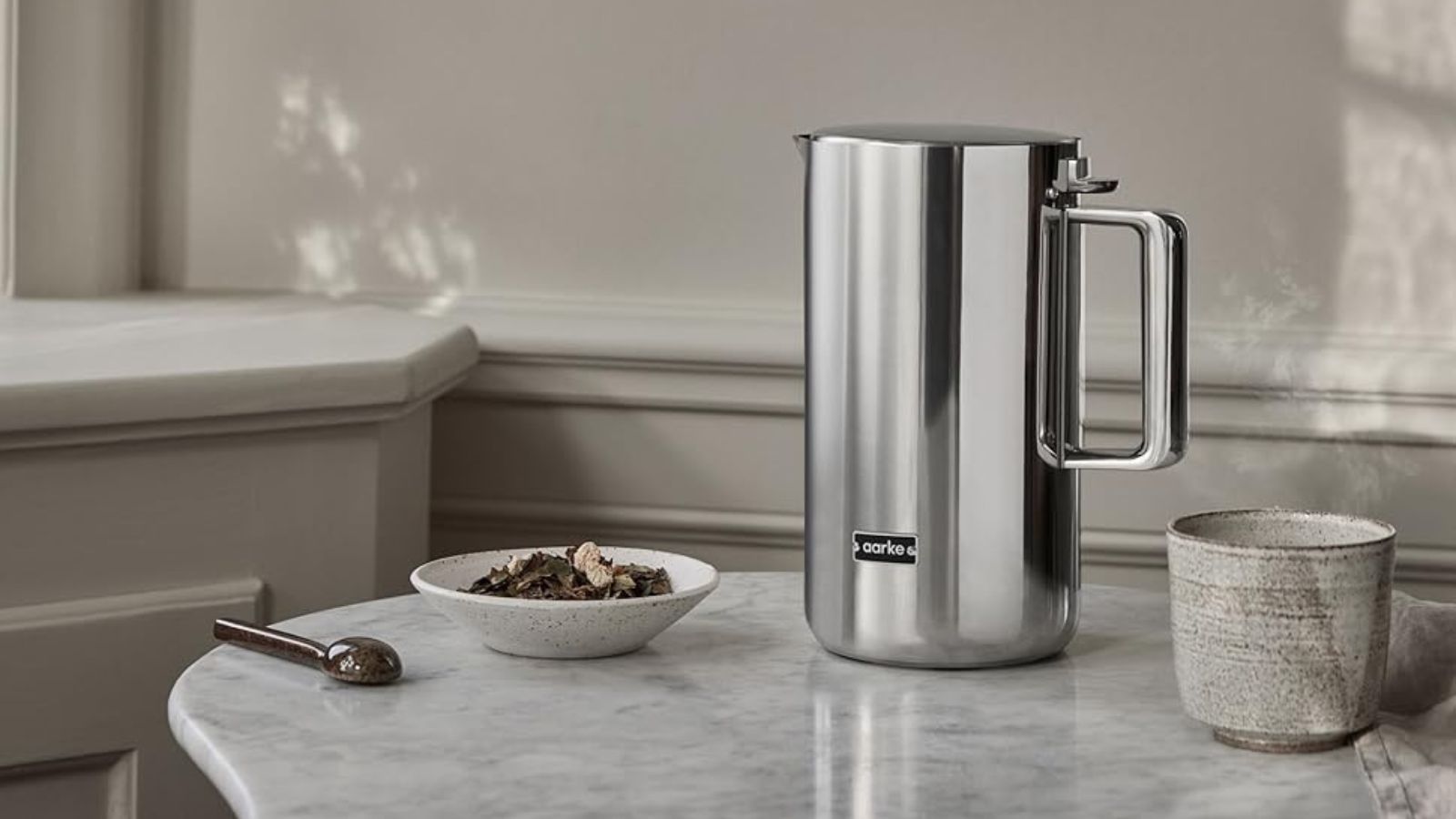

As a health-conscious cook with some long-term health issues, I value the quality of my cookware just as much as the ingredients I eat. My culinary career has taken me from Mediterranean organic farms to the nutritionist's kitchen of Mindful Chef, and even into non-toxic packaging labs, where I first learned about the risks of BPA and forever chemicals.
Now, as Kitchen Editor at H&G, I lead research, testing, and reviews on the top non-toxic kitchen appliances – from the best non-toxic coffee makers to non-toxic air fryers. I spend all day every day looking for stainless steel or ceramic appliances, that are safe to use at high temperatures, won't contaminate your food, and will last a long time.
With the help of our expert team of kitchen product testers, I've carefully curated this list of the best non-toxic kitchen appliances. I hope it inspires you to create a kitchen that’s as wholesome and healthy as it is beautiful.
The quick list
If you want a summary of the best non-toxic kitchen appliances on the market, here are the headlines. I'll go into more details of what we found in our expert tests further down the page.
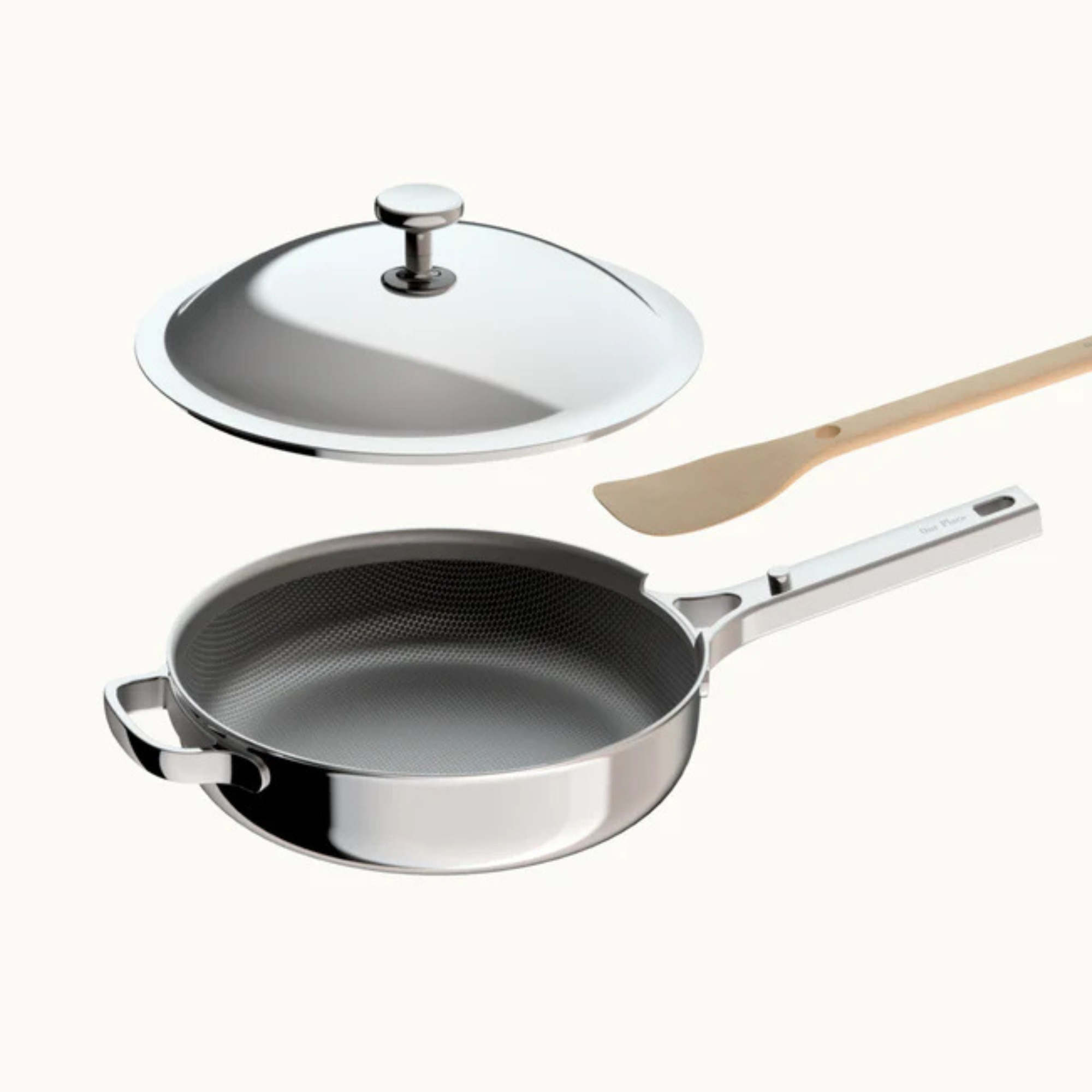
This pan is both pretty and professional. Plus, it won't leach chemicals, since it's free from PFOAs, PTFEs, lead and cadmium. Food sizzles and glides effortlessly, and it cleans easily with the natural brush included in the box.
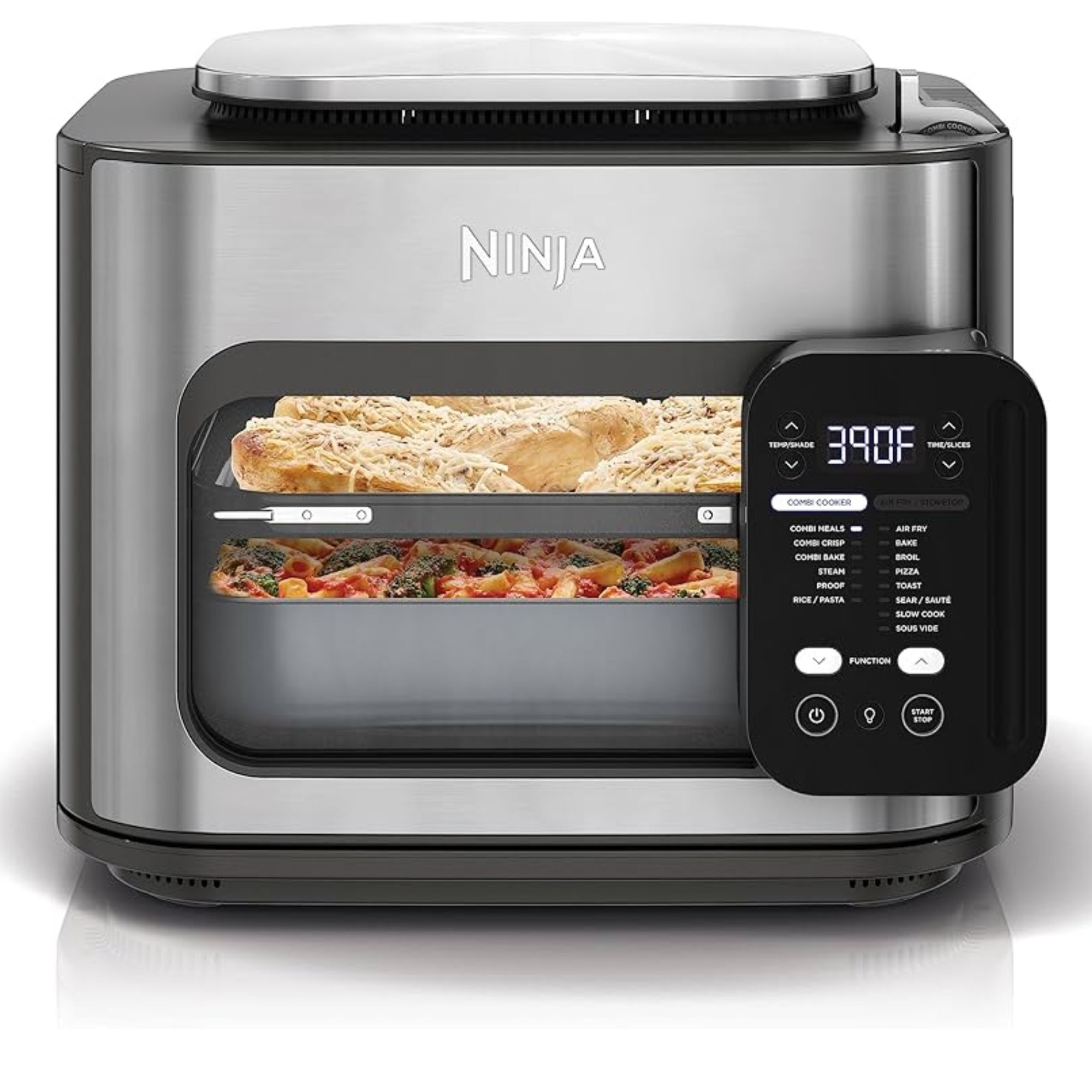
This multifunctional air fryer is a dream for healthy cooking. The ceramic-coated tray can air-crisp food, as well as bake, roast, steam, and more.
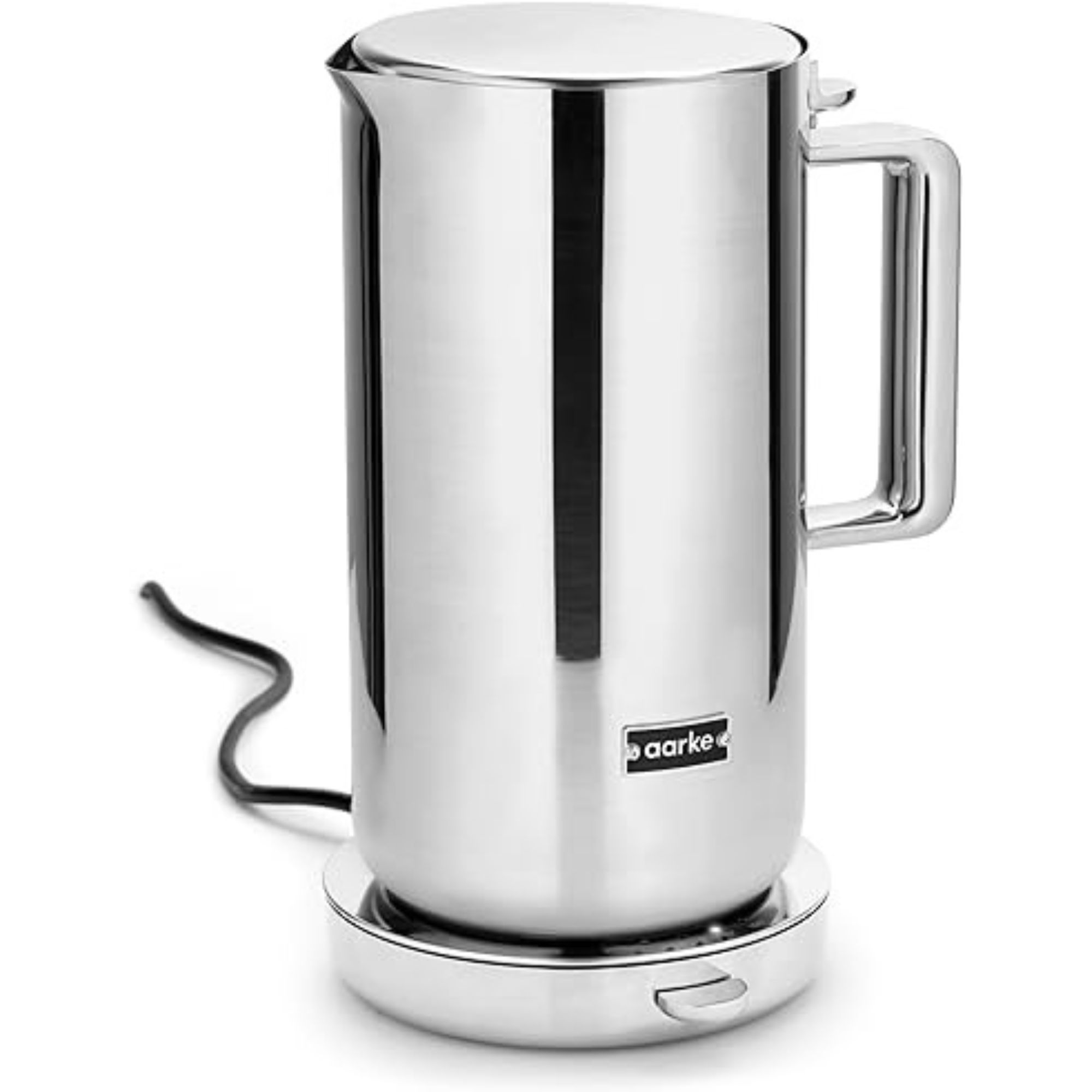
The Aarke Electric Kettle is made from high-quality stainless steel, a non-toxic material that doesn't leach harmful chemicals, even at boiling hot temperatures.
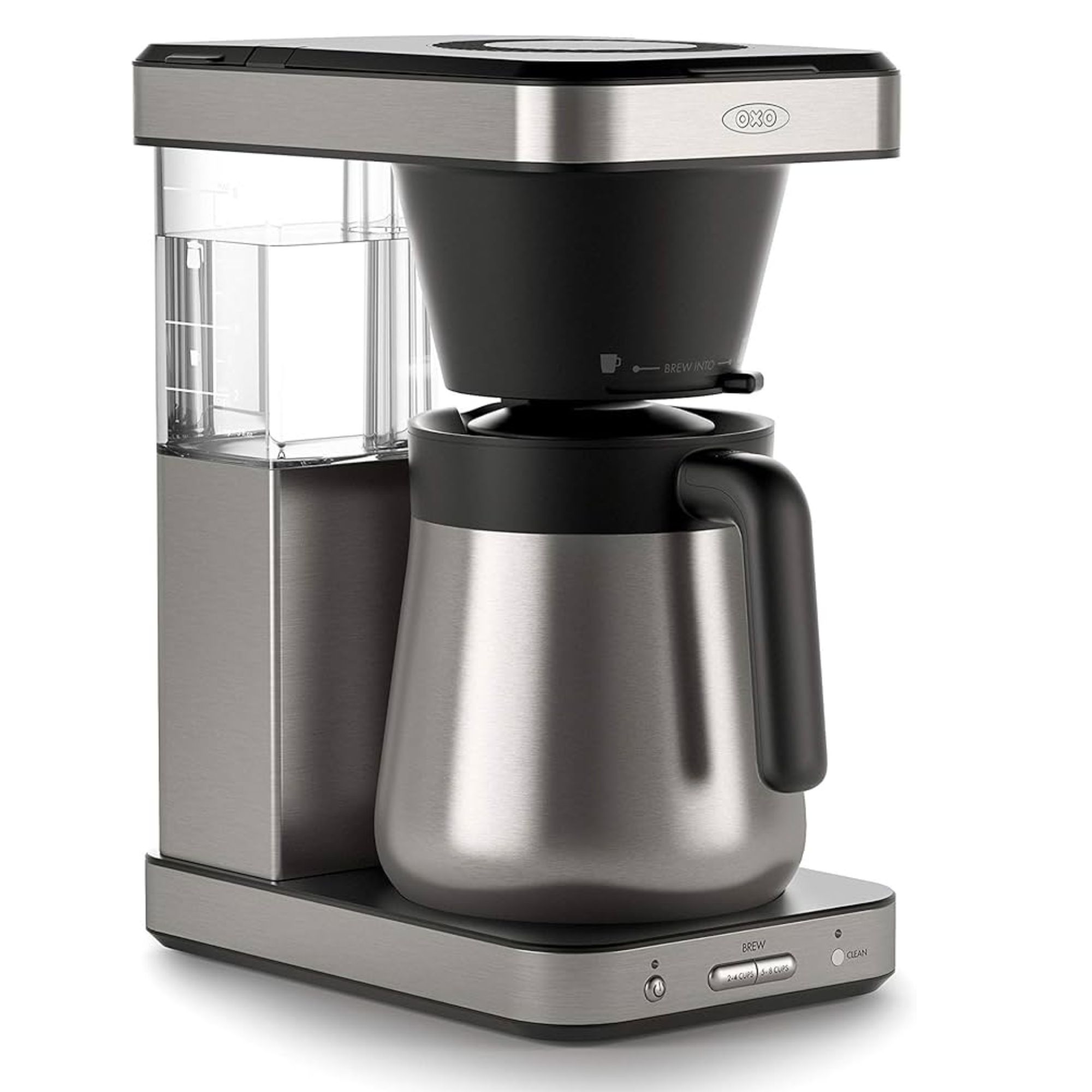
Our resident barista was the first to test this, proclaiming it the best drip coffee maker on the market. Crafted from stainless steel, the OXO brews award-winning coffee in under six minutes. It's faultless.
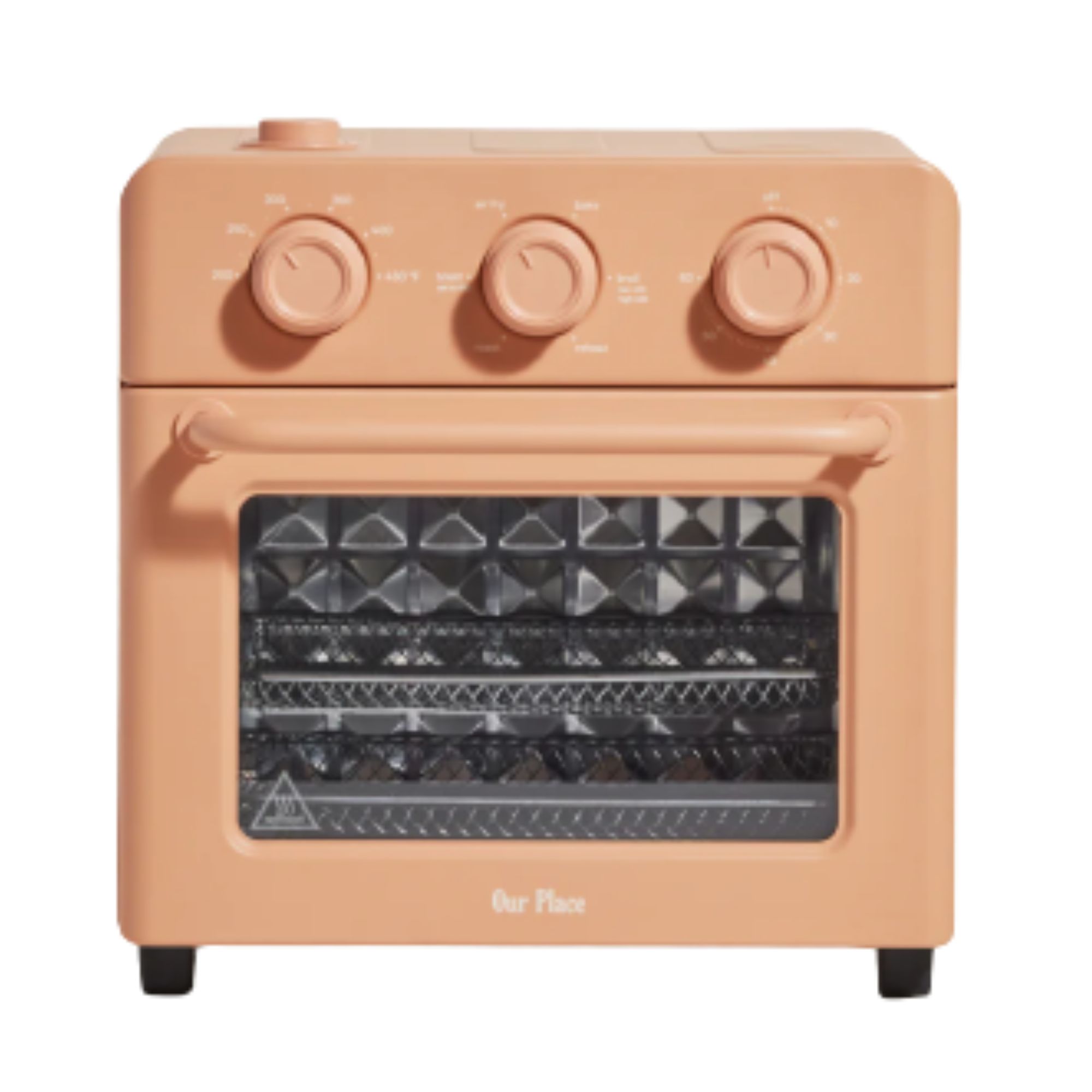
Our Place prides itself on using cleaner, conscious materials. This cute toaster oven is brilliant for bakers and air fryers alike. It uses ceramic materials and comes in a range of colors to brighten your kitchen.
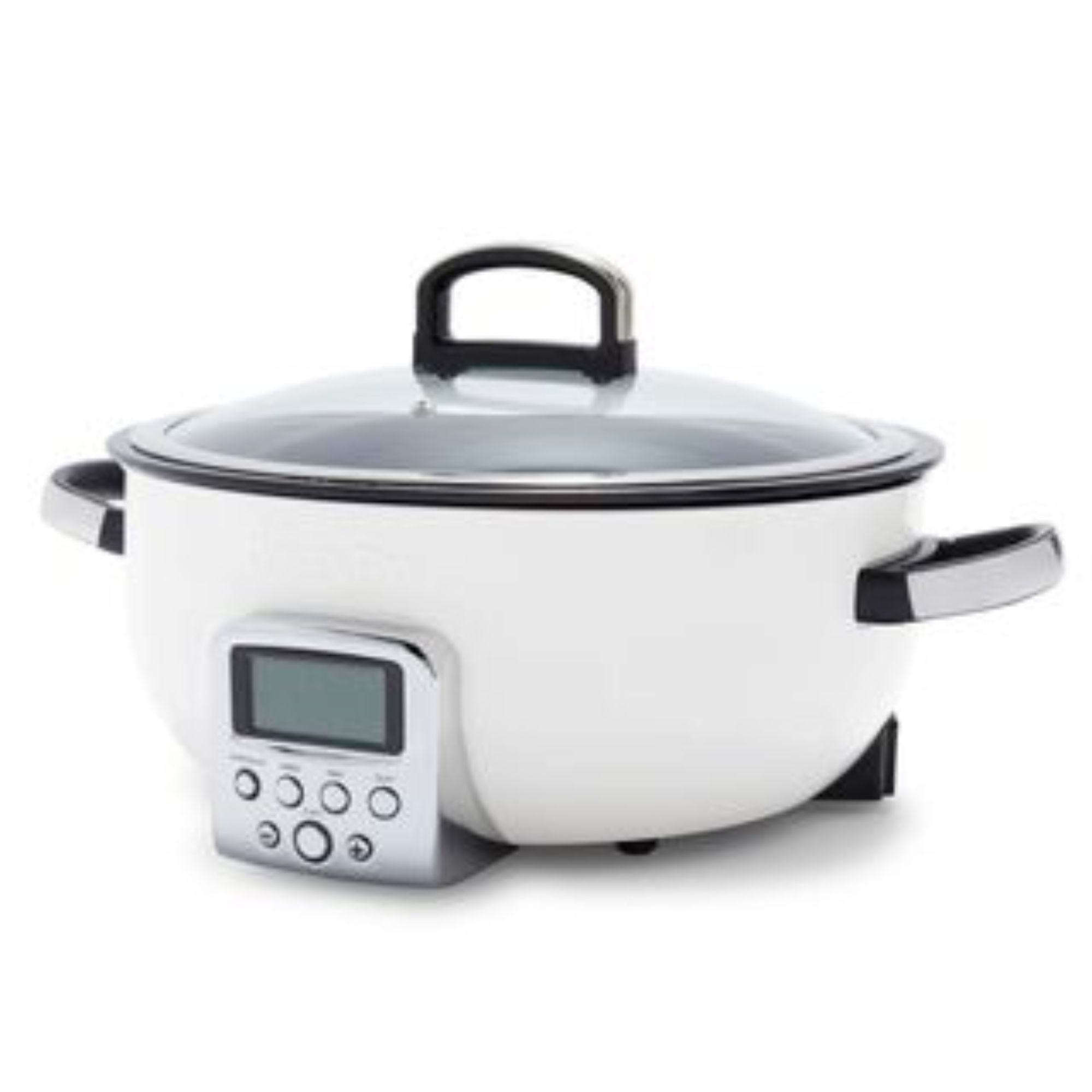
This slow cooker is totally free from PFAS, PFOA, lead, cadmium, and all sorts of toxins that could corrupt the taste of your cooking. It's ideal for slow-cooking dhals, stews, and vitamin-rich casseroles.
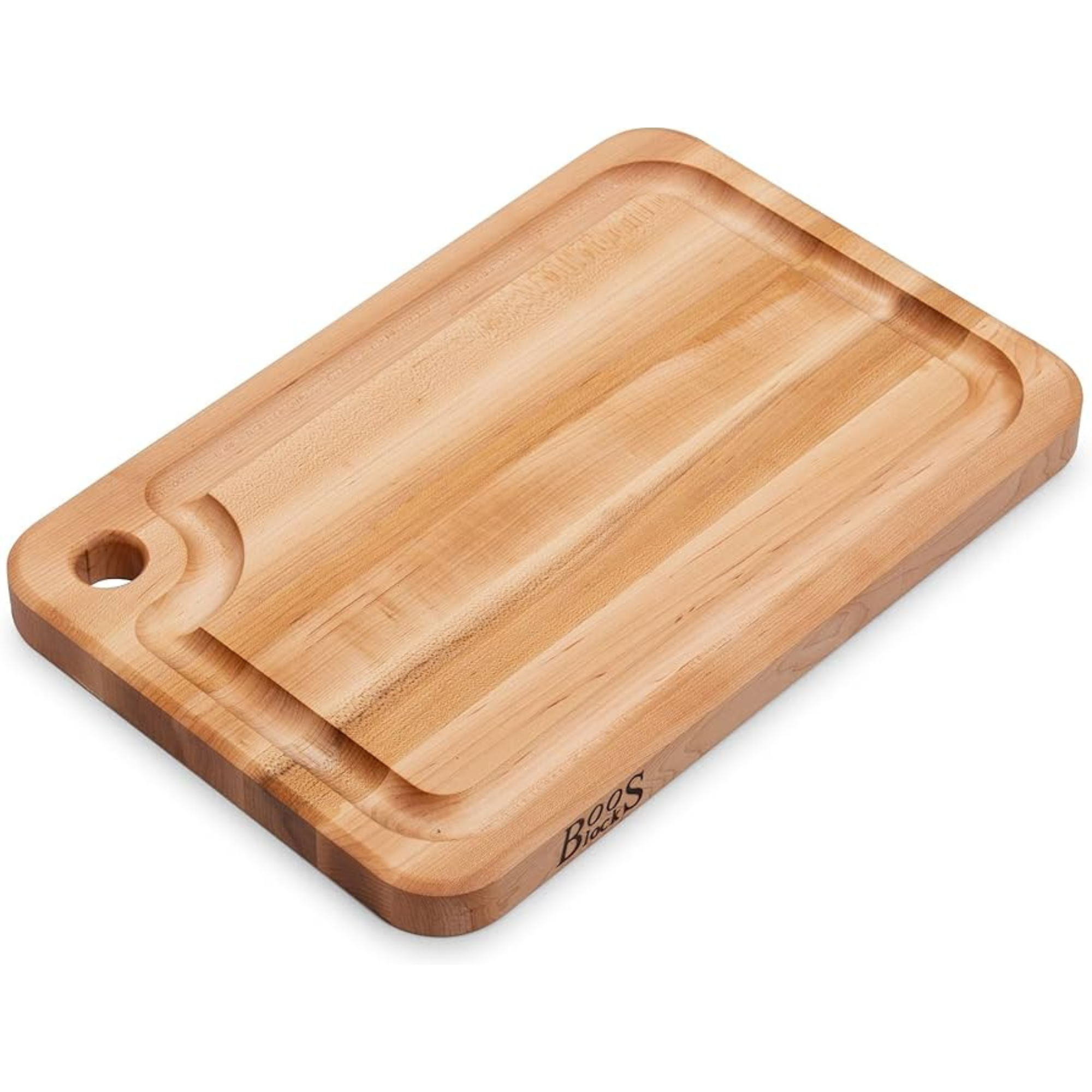
Crafted from maple wood, this plastic-free cutting board preserves the sharpness of your knives and doesn’t chip away over time. The brand is a favorite among professional chefs.
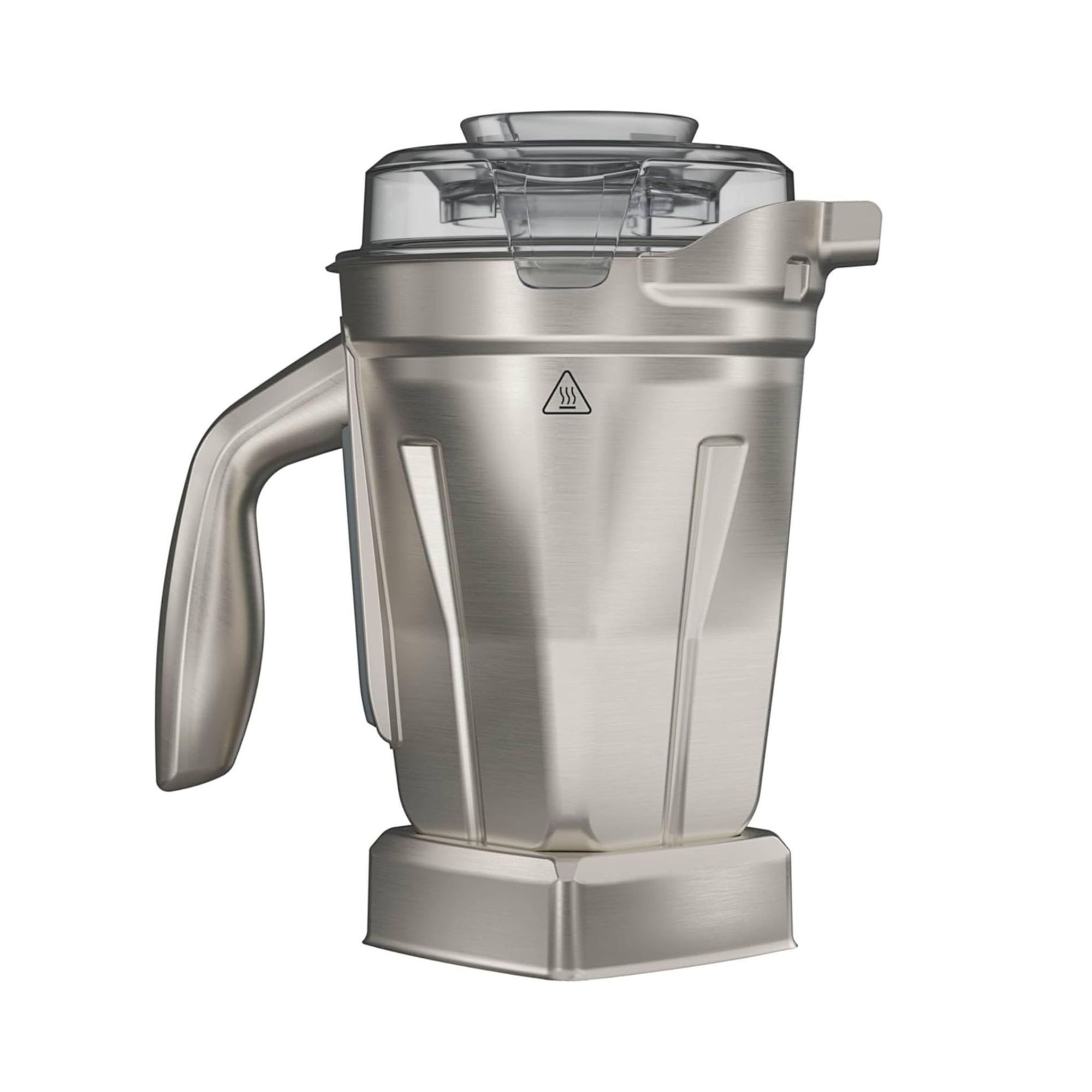
Vitamix make the very best blenders on the market, and they’re now available with a low-toxin accessory: the stainless steel container. Ideal for blending healthy smoothies and storing them safely in the refrigerator.
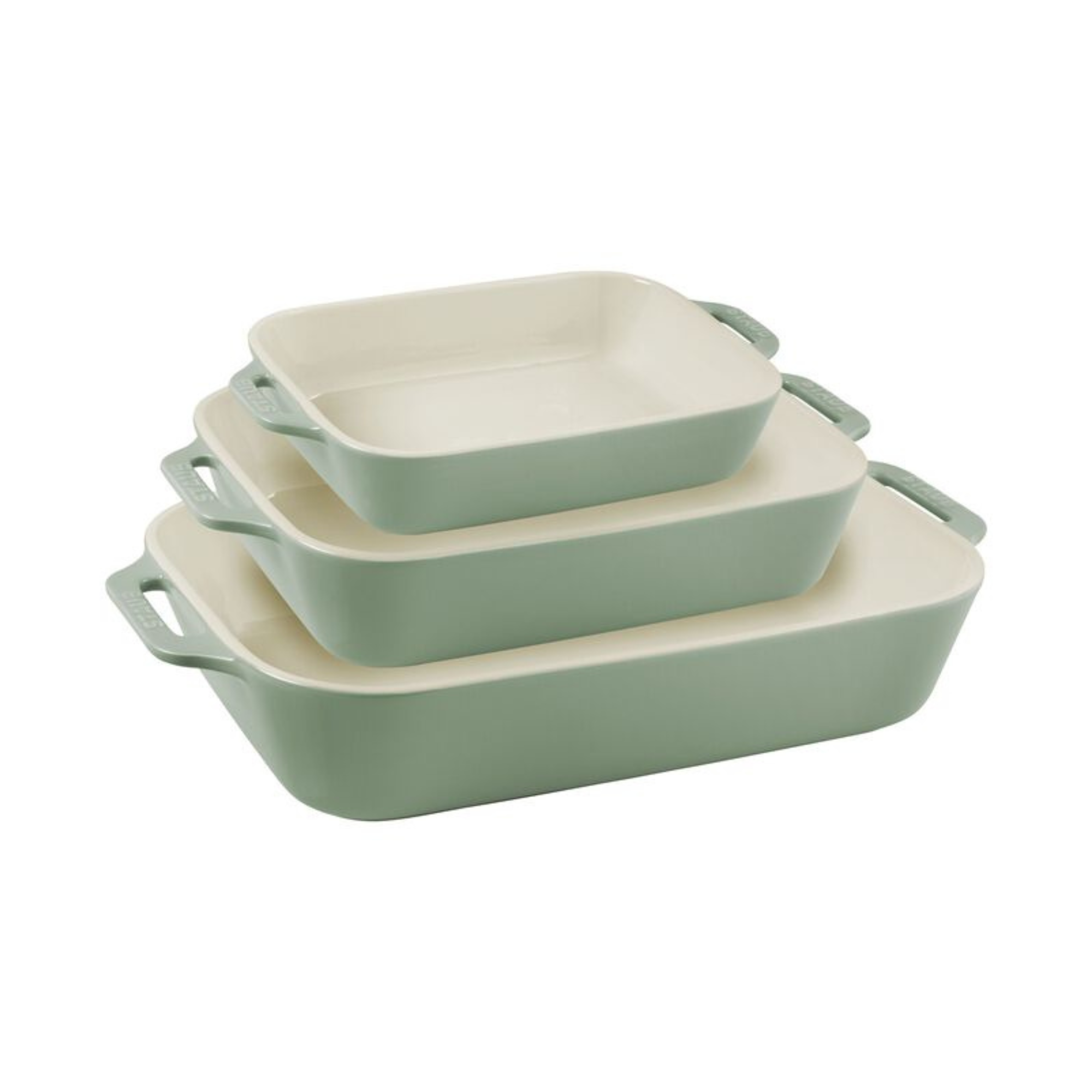
Crafted from naturally non-toxic stoneware with a porcelain enamel finish. This trio of baking dishes are ideal for everyday use. I've been testing them throughout fall and winter; they are simply a joy to bake with.
Best places to find non-toxic kitchen appliances
When searching for non-toxic kitchen appliances, look for brands that avoid Teflon non-stick coatings and prioritize high-quality materials. Think: stainless steel, wood, cast iron, and glass. Below, you'll find some reliable options.
- Our Place: Known for their non-stick Always Pan and Wonder Oven, plus non-toxic tongs, wooden spoons, cutting boards and more
- Bella: A new, affordable line of non-toxic air fryers, toasters and blenders made with EverGood™ Ceramic Nonstick Coating
- GreenPan: Specializing in ceramic non-stick griddles, slow-cookers and pans using a patented non-toxic coating called Thermolon
- Caraway: A colorful range of ceramic-coated dishes, roasting trays and frying pans for easy, chemical-free cooking
- Le Creuset: Famous for enameled cast iron Dutch ovens and braisers, which are naturally non-toxic and non-stick when used correctly
- Staub: More enameled cast iron dishes that are safe, durable and beautiful
Best non-toxic frying pan
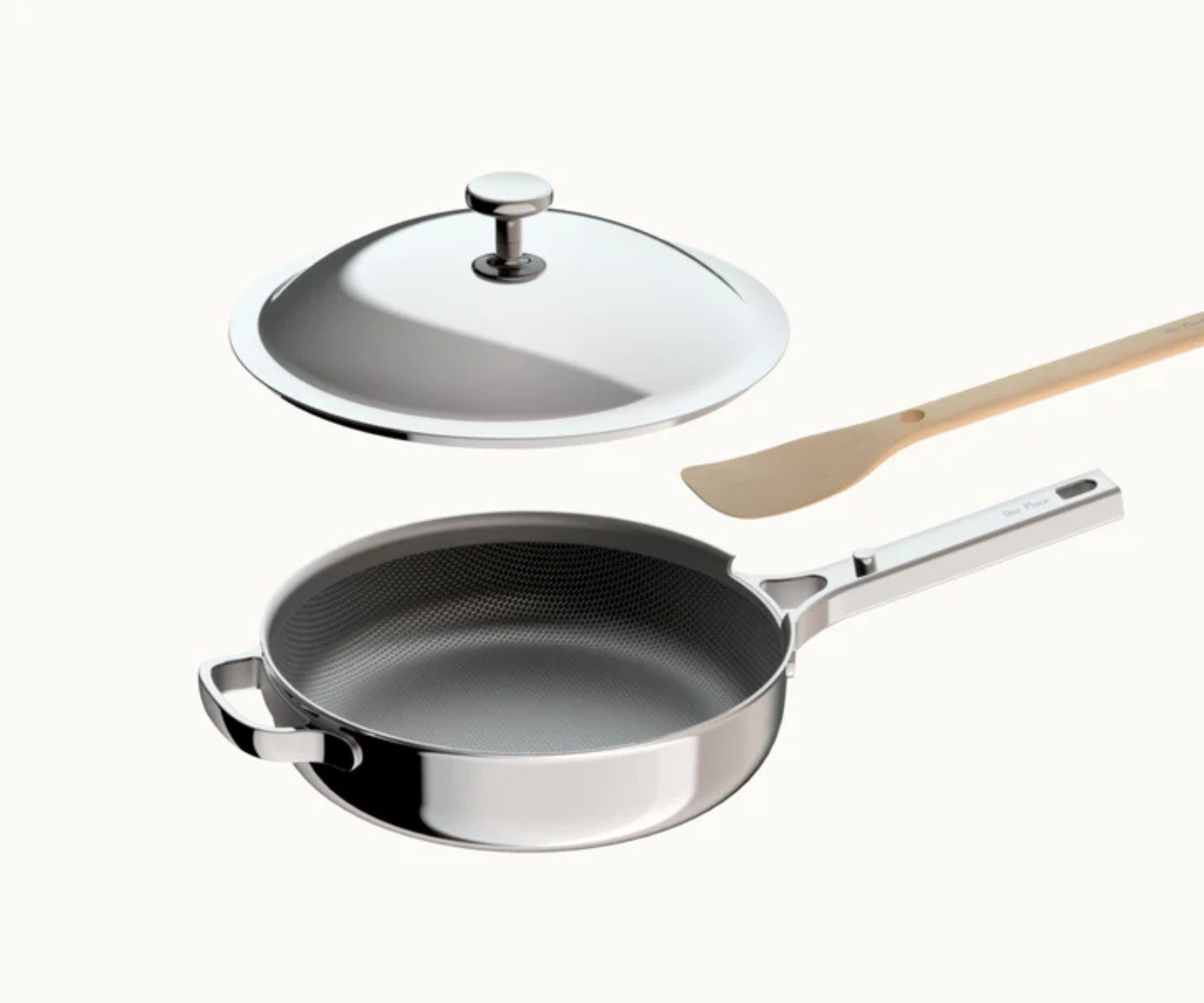
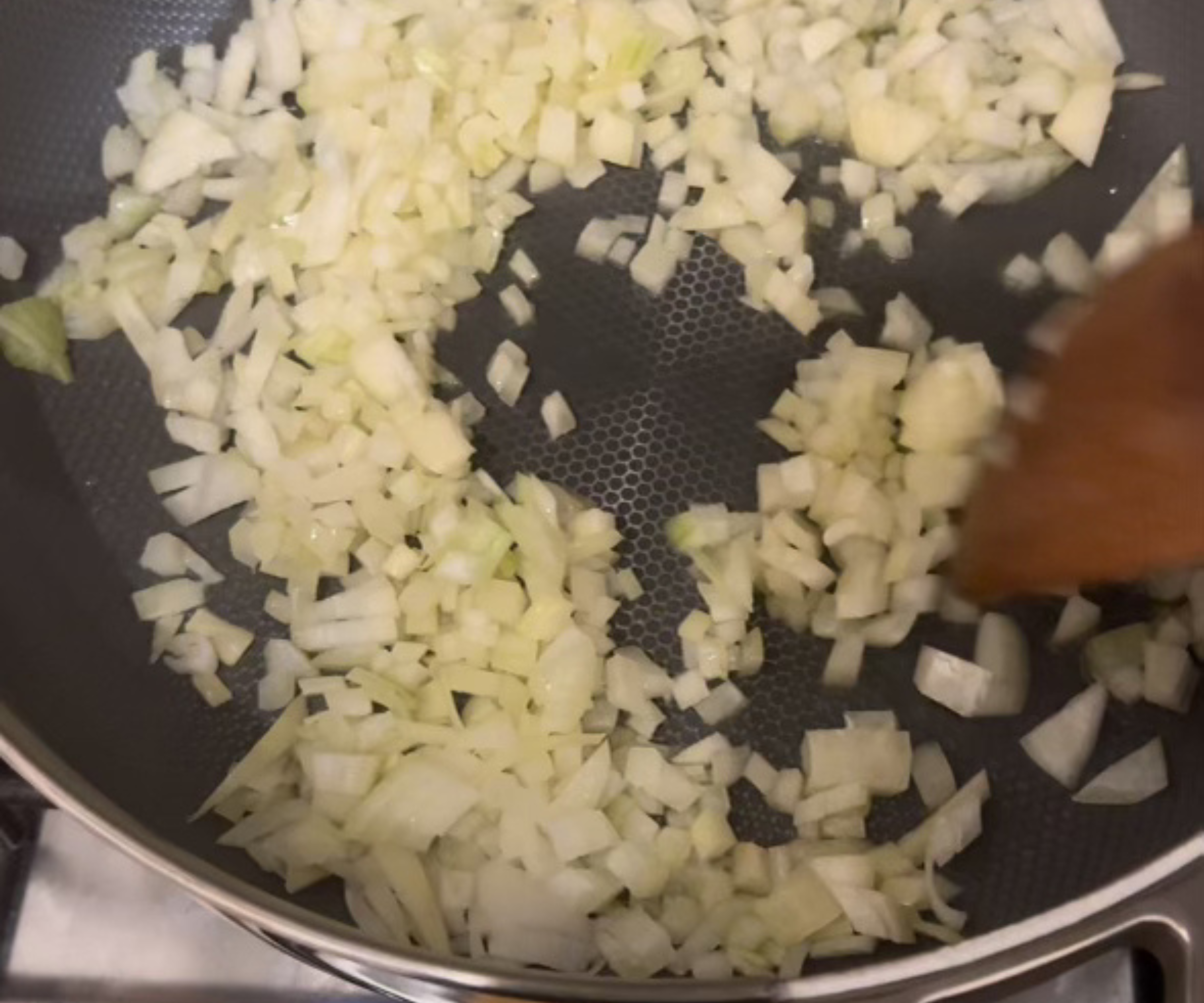
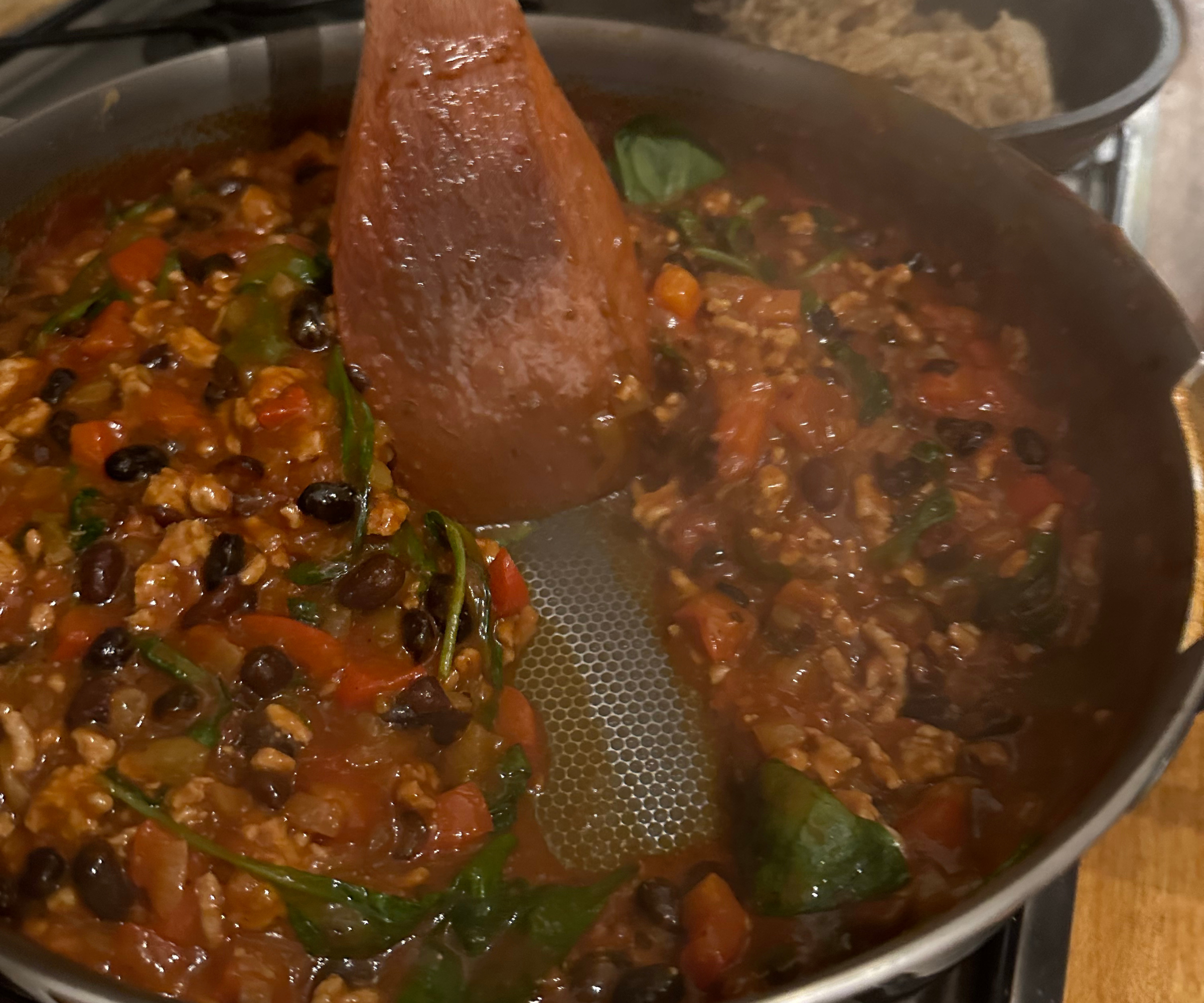
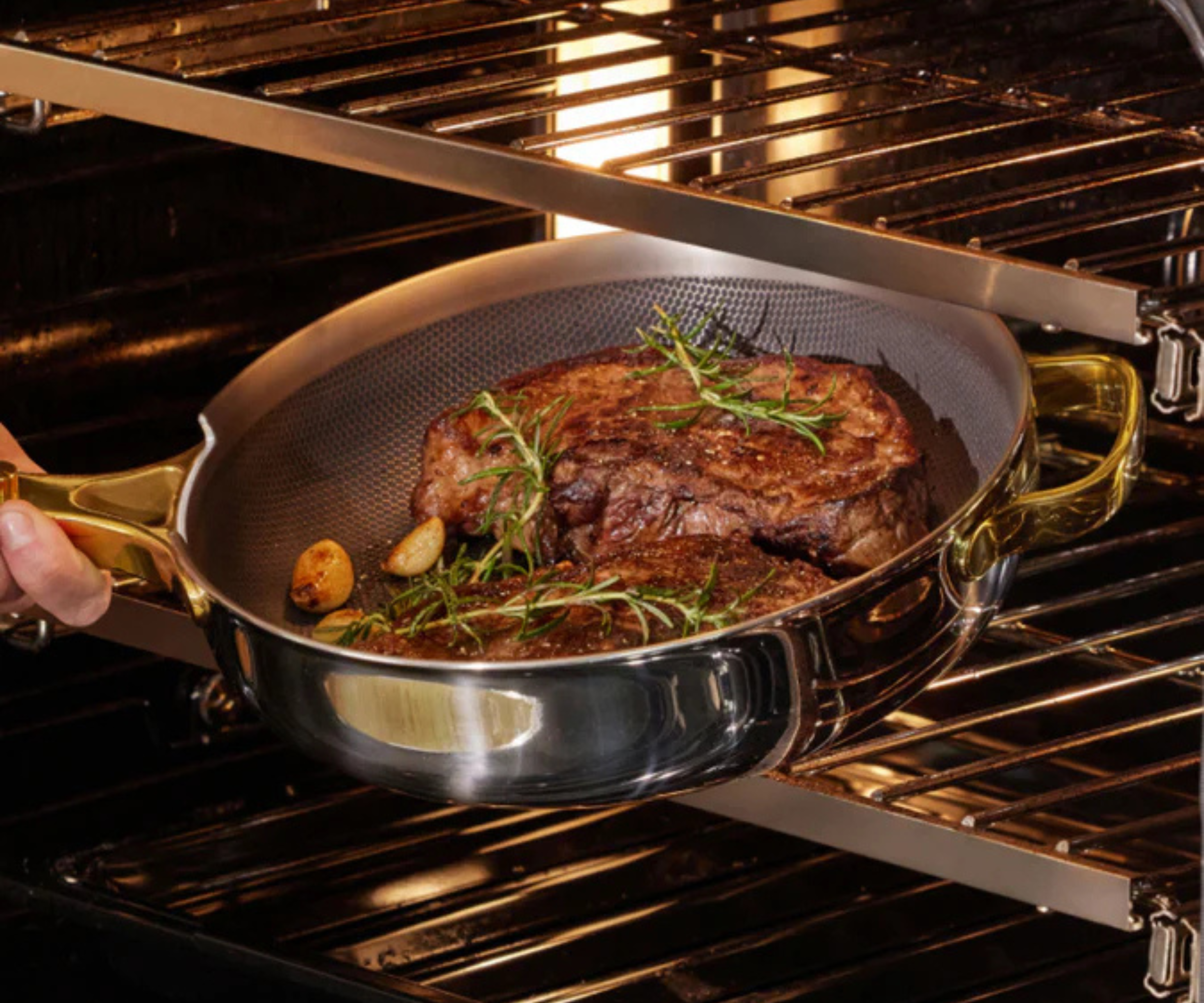
Our Place Titanium Always Pan® Pro
Our expert review:
Specifications
Reasons to buy
Reasons to avoid
I've been testing the Always Pan® Pro in my kitchen every night for a month, and it's totally changed my cooking experience. Our Place have created a coating-free, nonstick cooking surface – made without forever chemicals. They call this 'NoCo™ technology' – and it certainly works.
In testing, the Always Pan® Pro performed beautifully: food glides effortlessly, making it easy to achieve perfect browning without sticking. From sizzling diced onions to browning pork mince and even sticky paneer cheese, the pan easily handled it and required minimal cleanup afterwards. I've used it daily, with no concern about peeling or damage over time.
I also loved the beechwood spatula, which nestles neatly onto the pan lid – and the thoughtful cleaning brush, which is very effective for scooping up leftover fond or grains of food. My only criticism is that the pan is quite heavy – but it is made of tri-ply titanium and stainless steel... and I definitely need to work my arm muscles in the gym.
Overall, this high-performance, non-toxic frying pan is a must-have for any keen cook. You can make many delicious, healthy meals for years to come.
There's more detail in my Our Place Titanium Always Pan® Pro review.
Best non-toxic air fryer

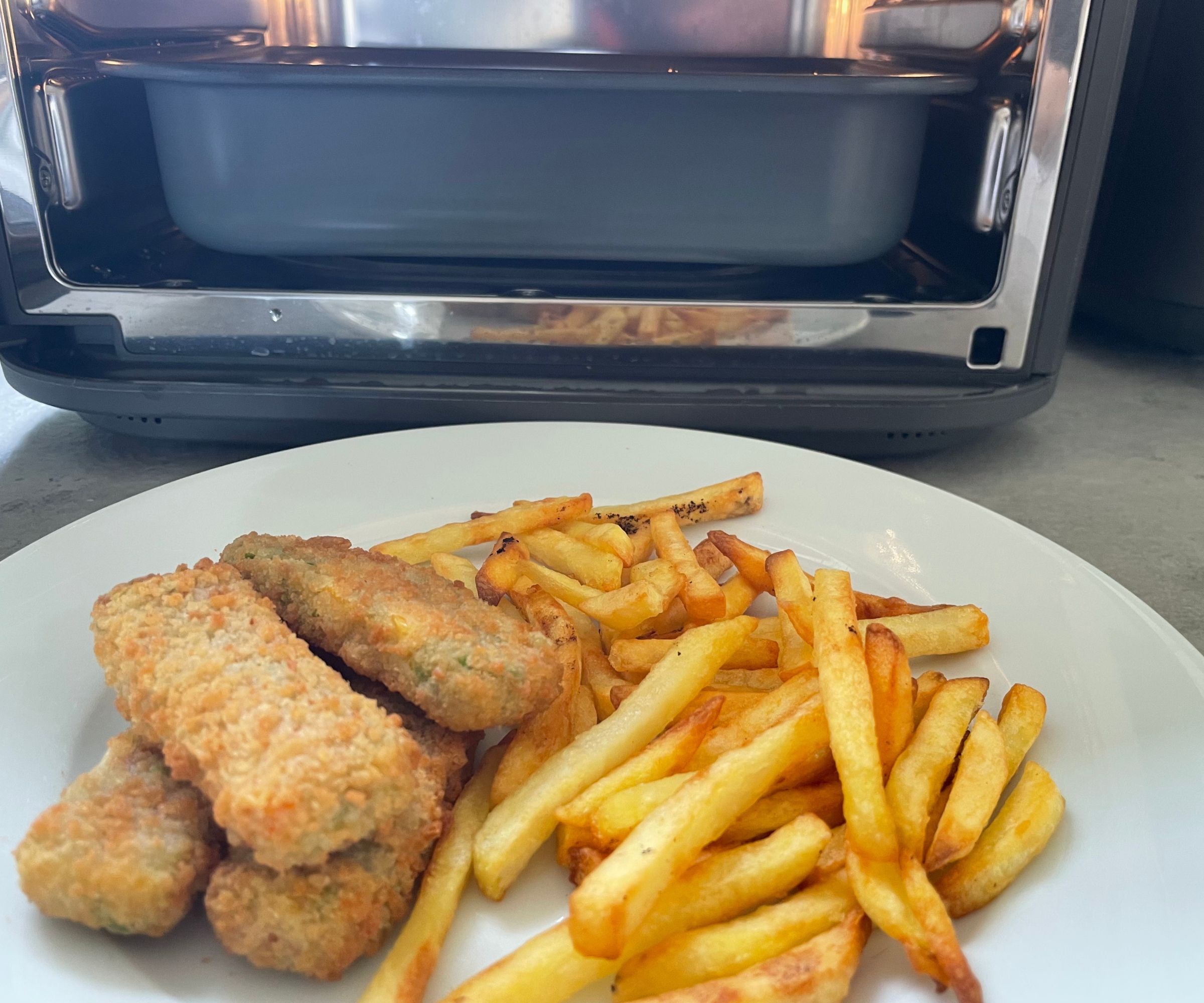
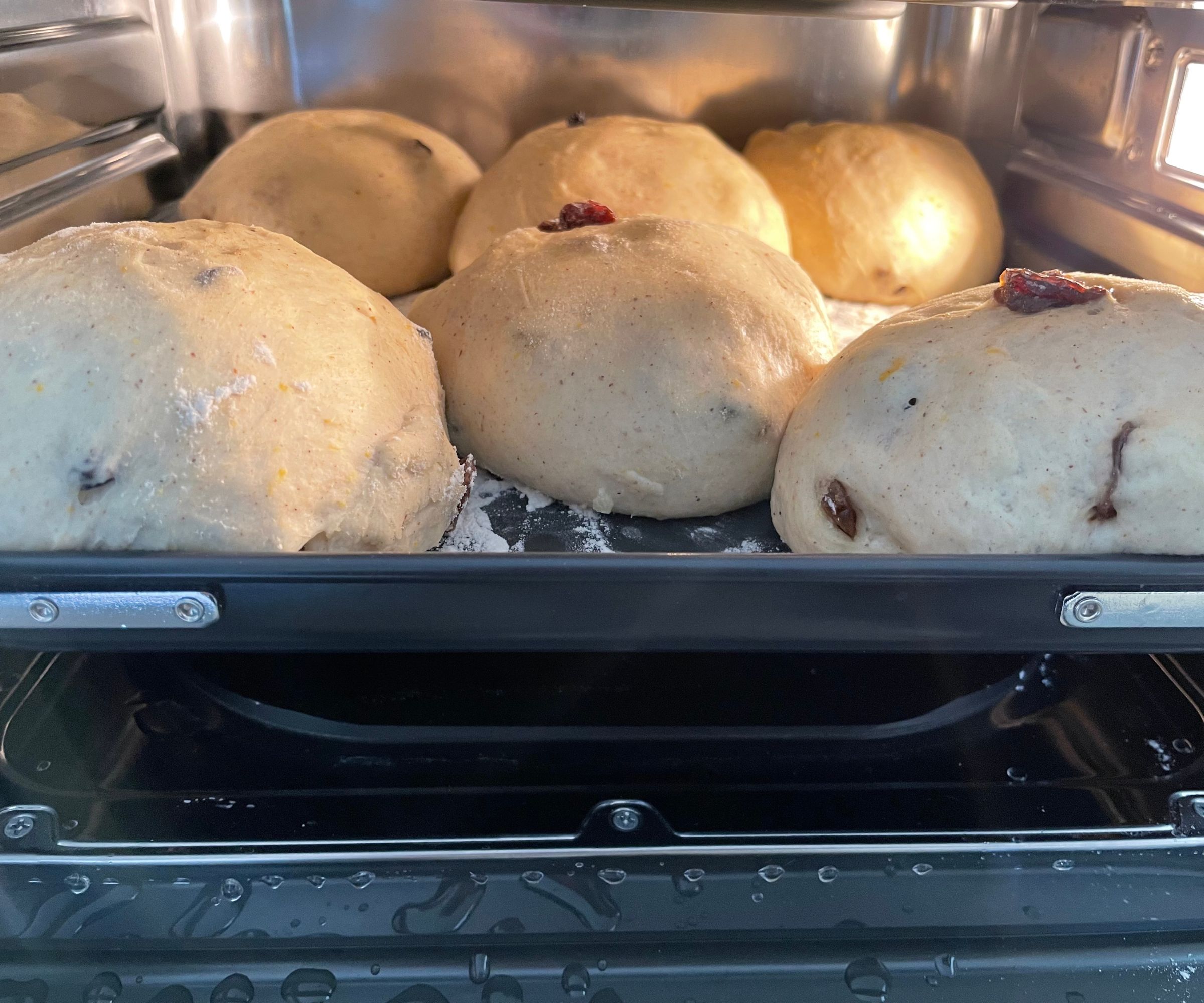
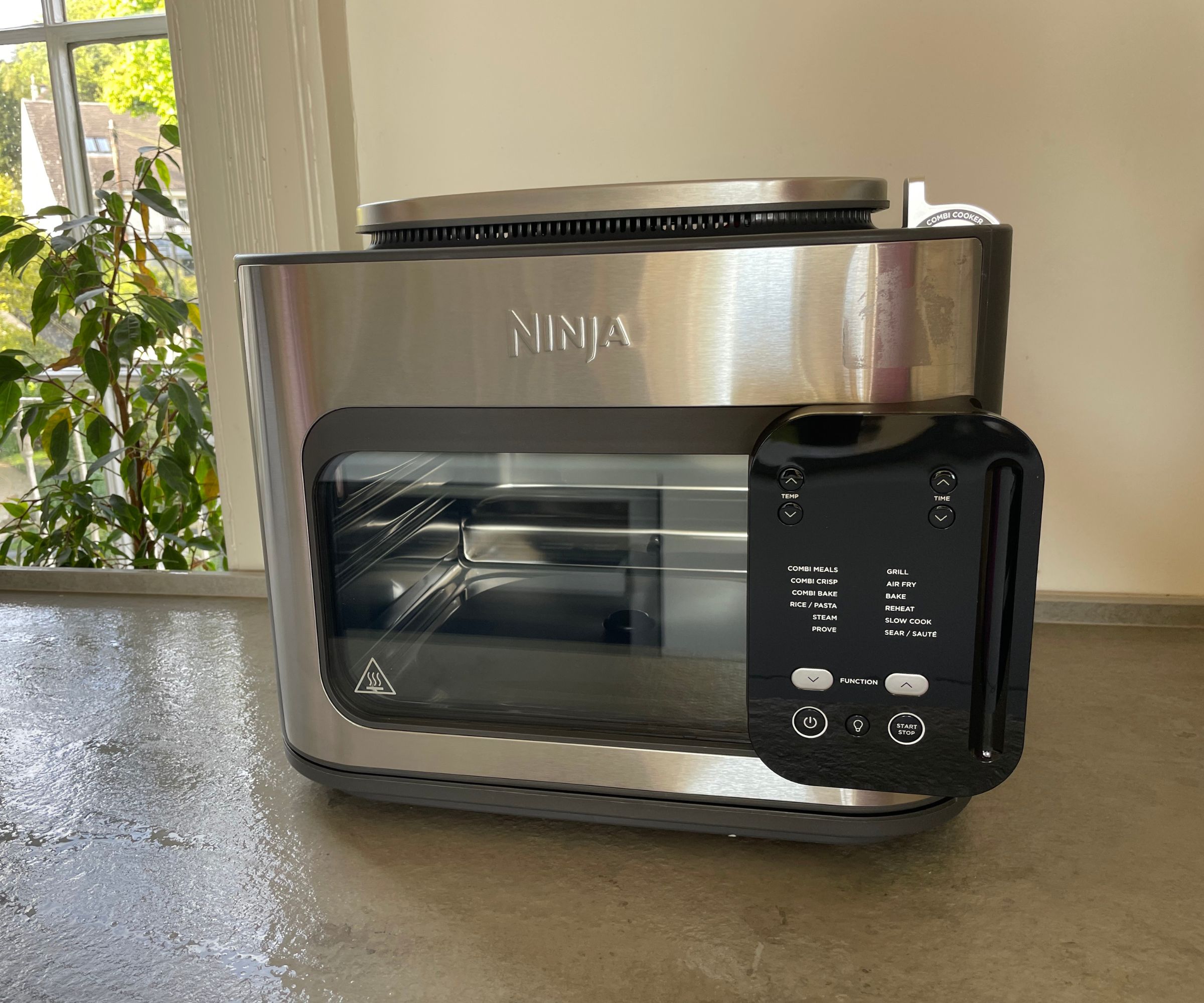
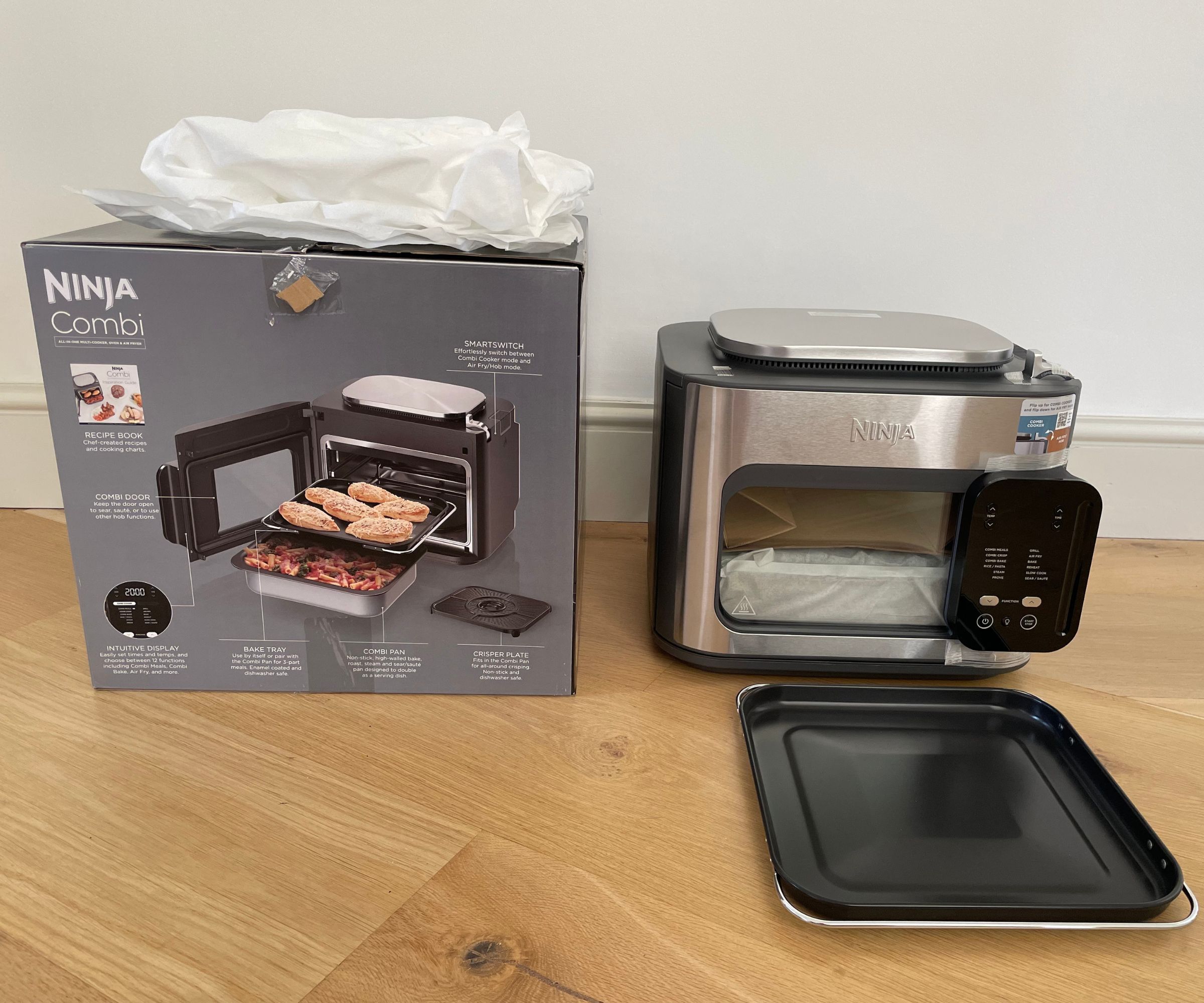
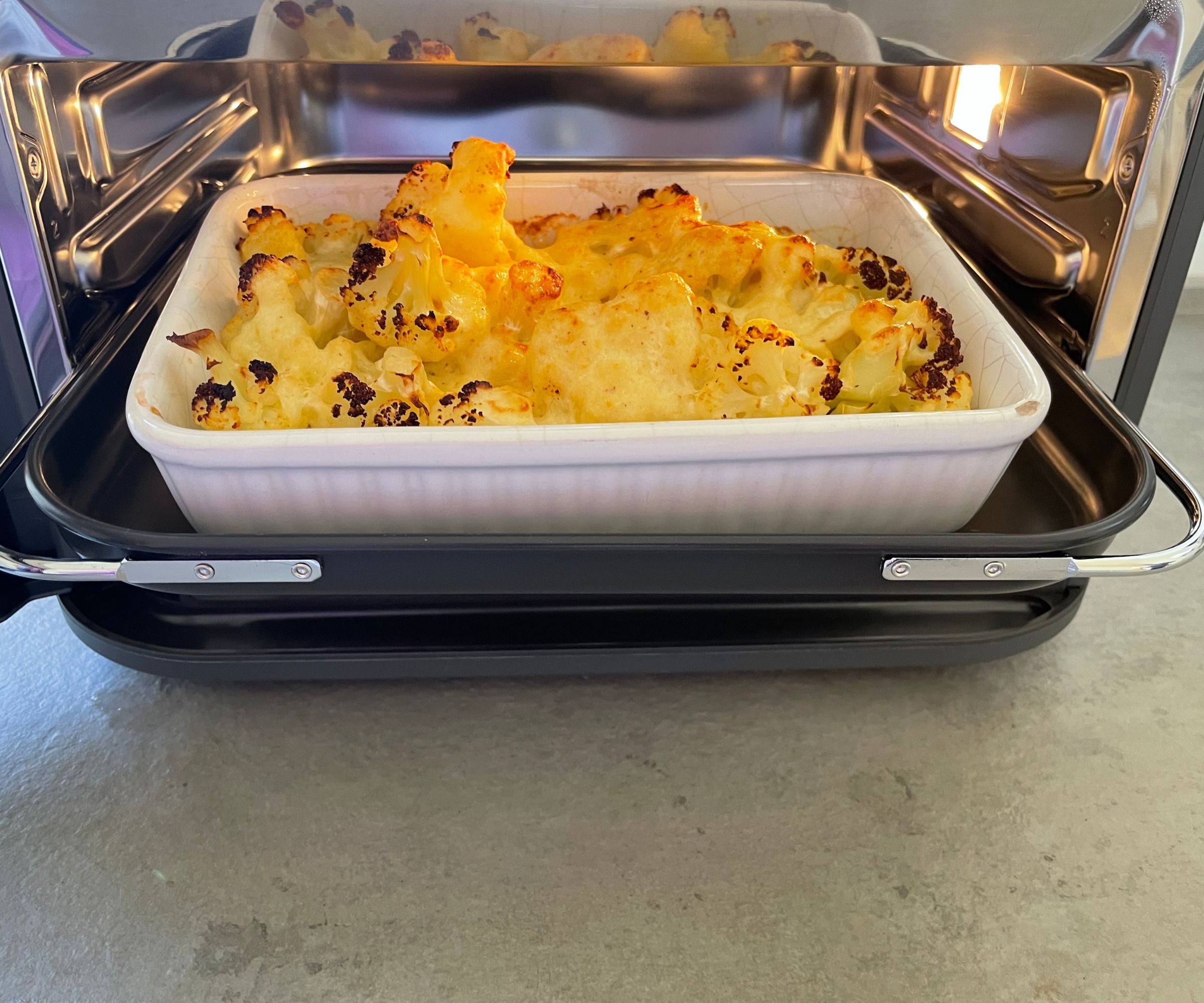
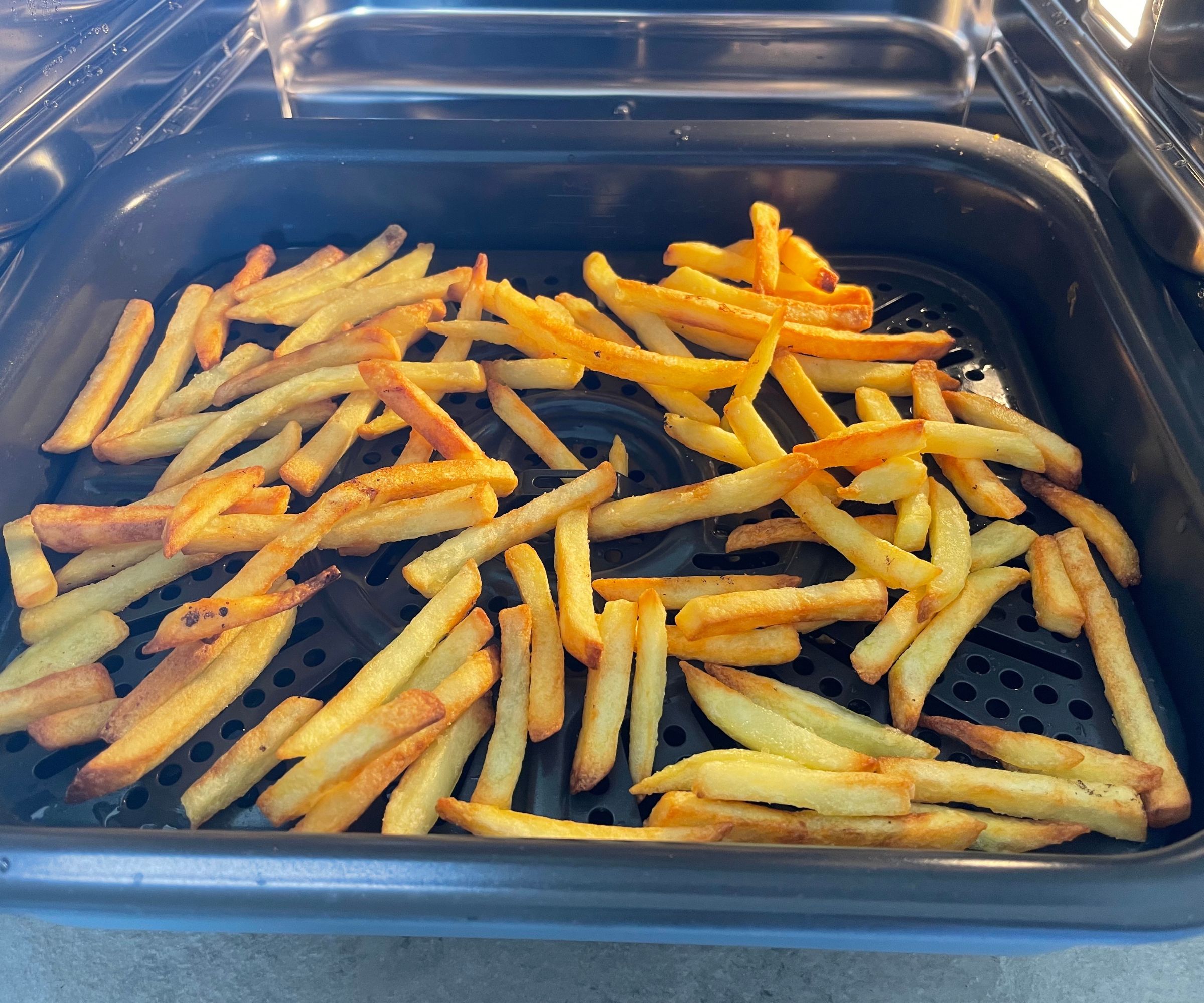
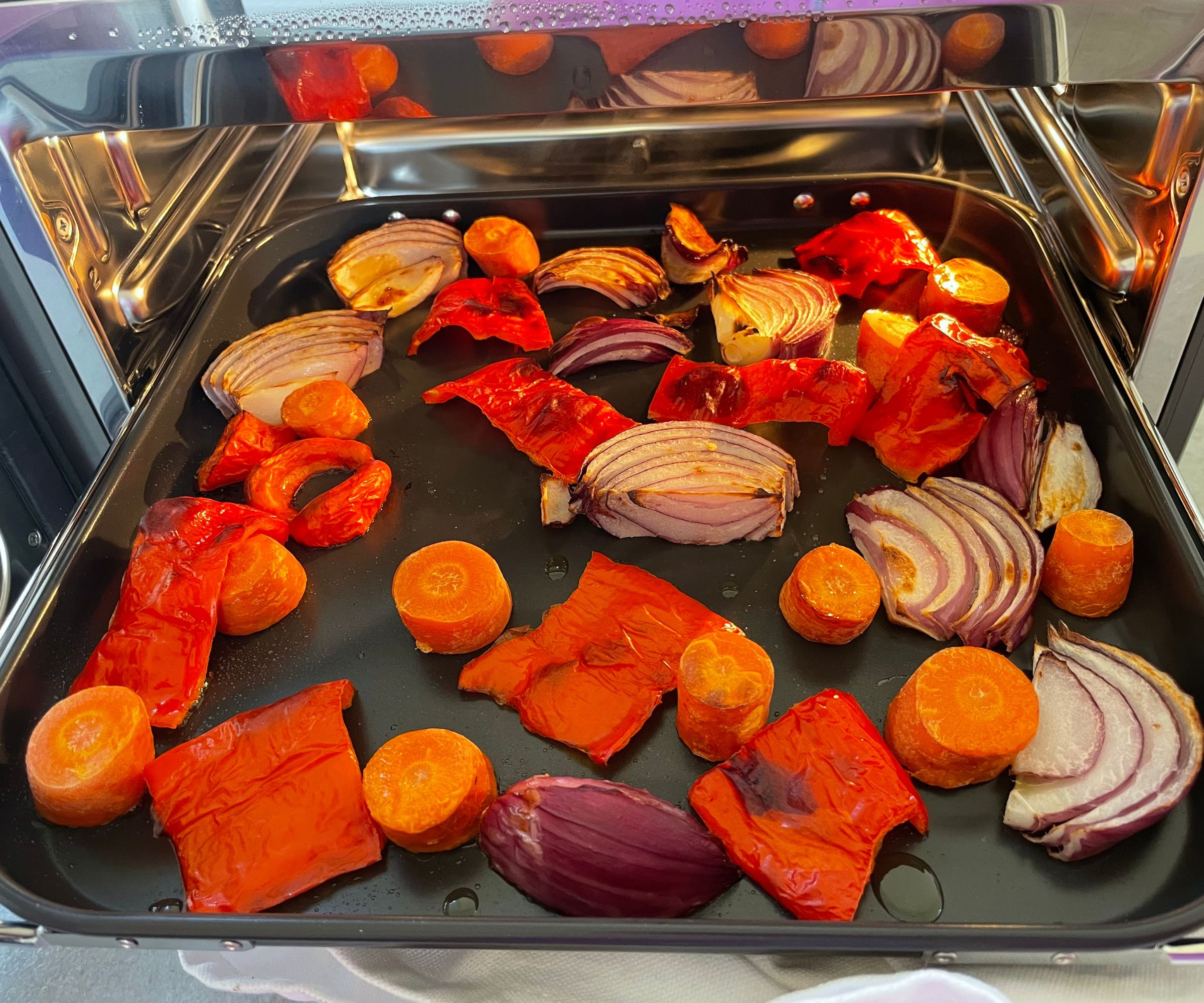
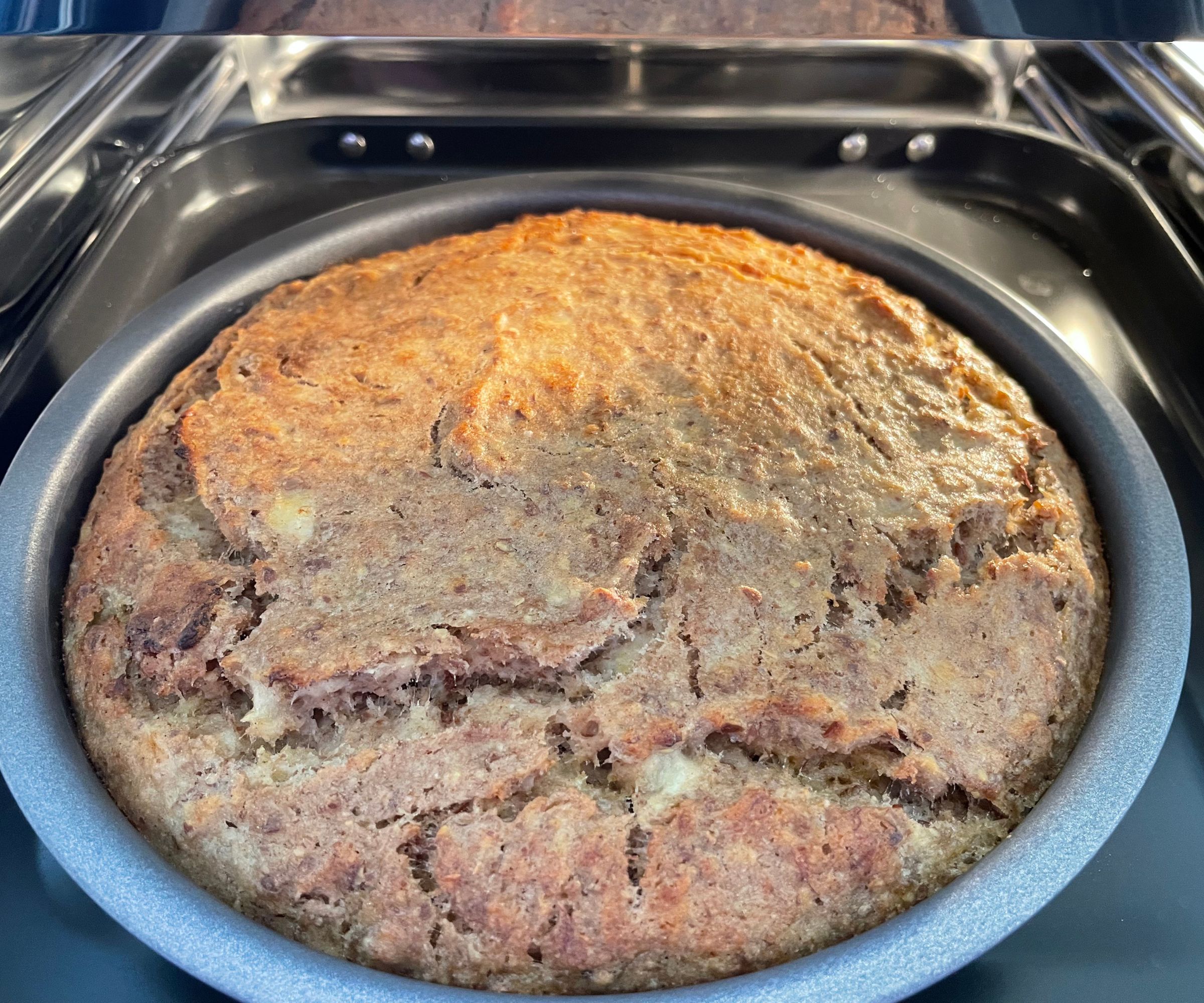
2. Ninja Combi Multicooker
Our expert review:
Specifications
Reasons to buy
Reasons to avoid
Known for making the best air fryers on the market, this Ninja model stands out as one of the best non-toxic options – appealing to health-conscious cooks for a couple of important reasons.
The Ninja Combi’s baskets and trays are made from aluminum and coated in non-stick enamel and ceramic (considered safer, non-toxic alternatives to non-stick coatings like Teflon). For anyone looking to minimize exposure to potentially harmful chemicals in cookware, options like this are ideal.
The Combi is also impressively versatile, making it a smart choice for the cost. At $179, the Ninja Combi offers enormous capacity and twelve different cooking functions – from roasting to air frying. It heats up quickly and consistently produces perfectly crisped foods, from homemade fries to roasted vegetables. I love the glass window, which lets you keep an eye on your food as it cooks, reducing the risk of potentially toxic, burnt food. A stroke of genius, really.
That said, Ninja’s presets may require a little tweaking to avoid overcooking in the first place. But for anyone who wants an air fryer that prioritizes healthy food, versatility and convenience, the Ninja Combi is a worthwhile investment.
You can read more in our full review of the Ninja Combi Multicooker
Best non-toxic kettle

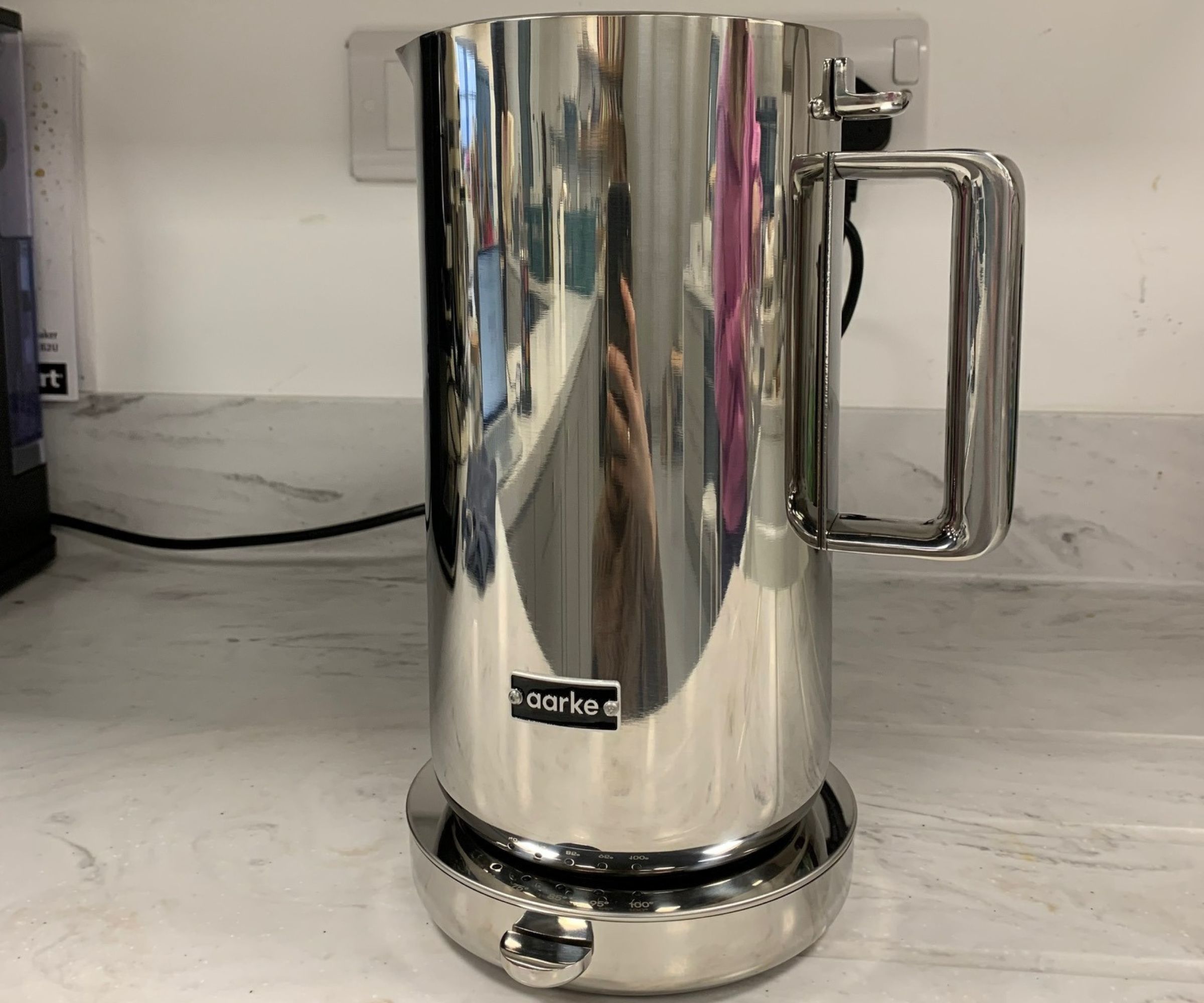
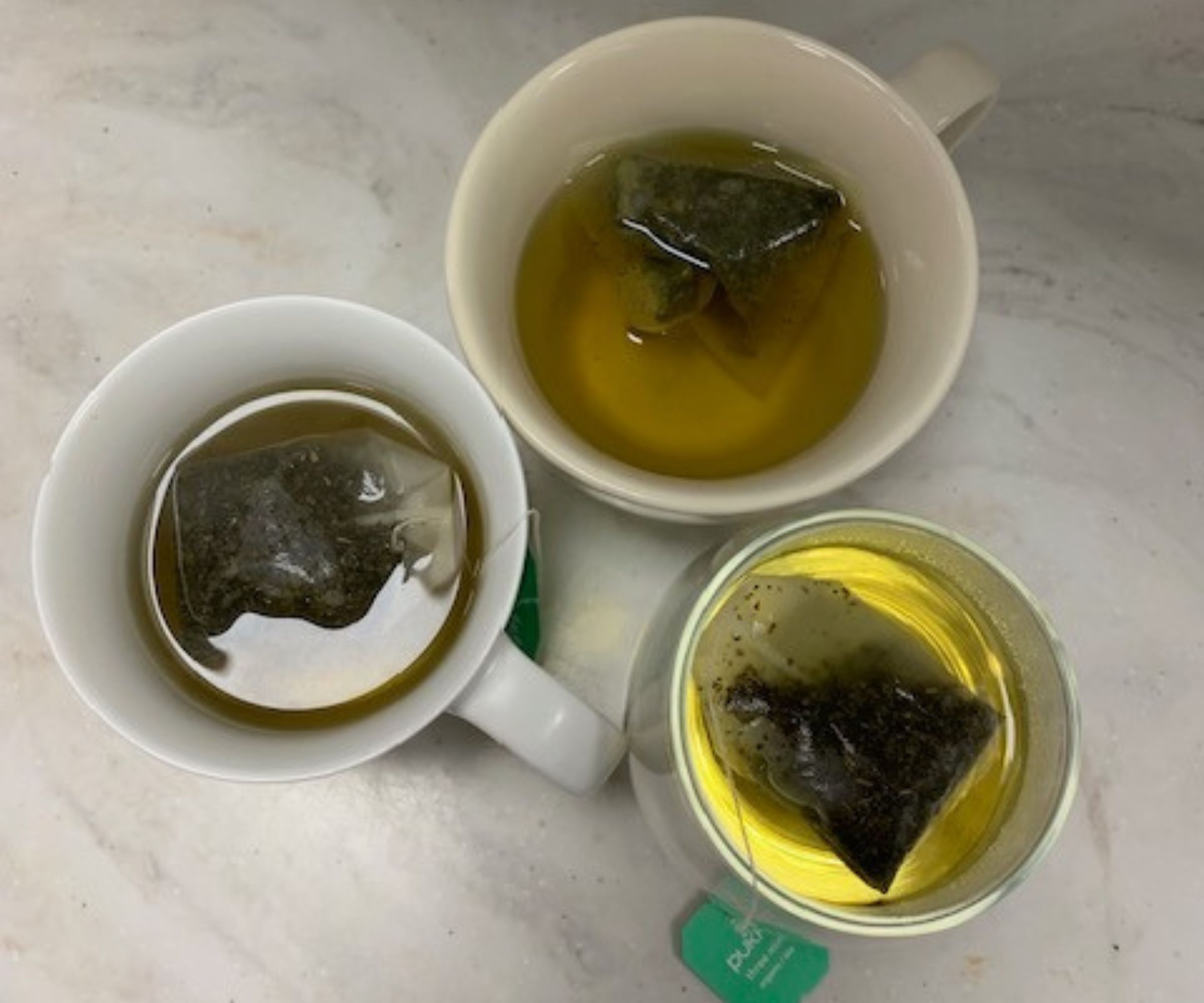
3. Aarke Stainless Steel Kettle
Our expert review:
Specifications
Reasons to buy
Reasons to avoid
Many kettles include plastic parts in their design. When these parts come into contact with boiling water, there’s a risk of chemicals – such as BPA – leaching into the water.
Instead, the Aarke Electric Kettle is made from high-quality stainless steel and 4% BPA-free plastic, a non-toxic material that won’t release any harmful chemicals, even at high temperatures. It's on the expensive side, but you can't put a price on peace of mind. It's certainly a safe, healthy choice for heating water every day.
It was actually voted our best electric kettle overall. On testing, we loved the double-wall construction, which minimizes heat loss so your water stays warm longer without needing to be reboiled – ideal for those who want to save energy.
It also has thermoregulating capabilities. Not only does it boil water, but it also maintains warm or simmering temperatures, making it a perfect choice for tea, coffee, or even a comforting warm glass of water in the morning.
Beyond its non-toxic construction, the Aarke Kettle is a beauty on the counter. Though stainless steel can show smudges, Aarke includes a microfiber cloth to keep it looking pristine. What's not to like?
Read our full Aarke Electric Kettle review here.
Best non-toxic coffee maker
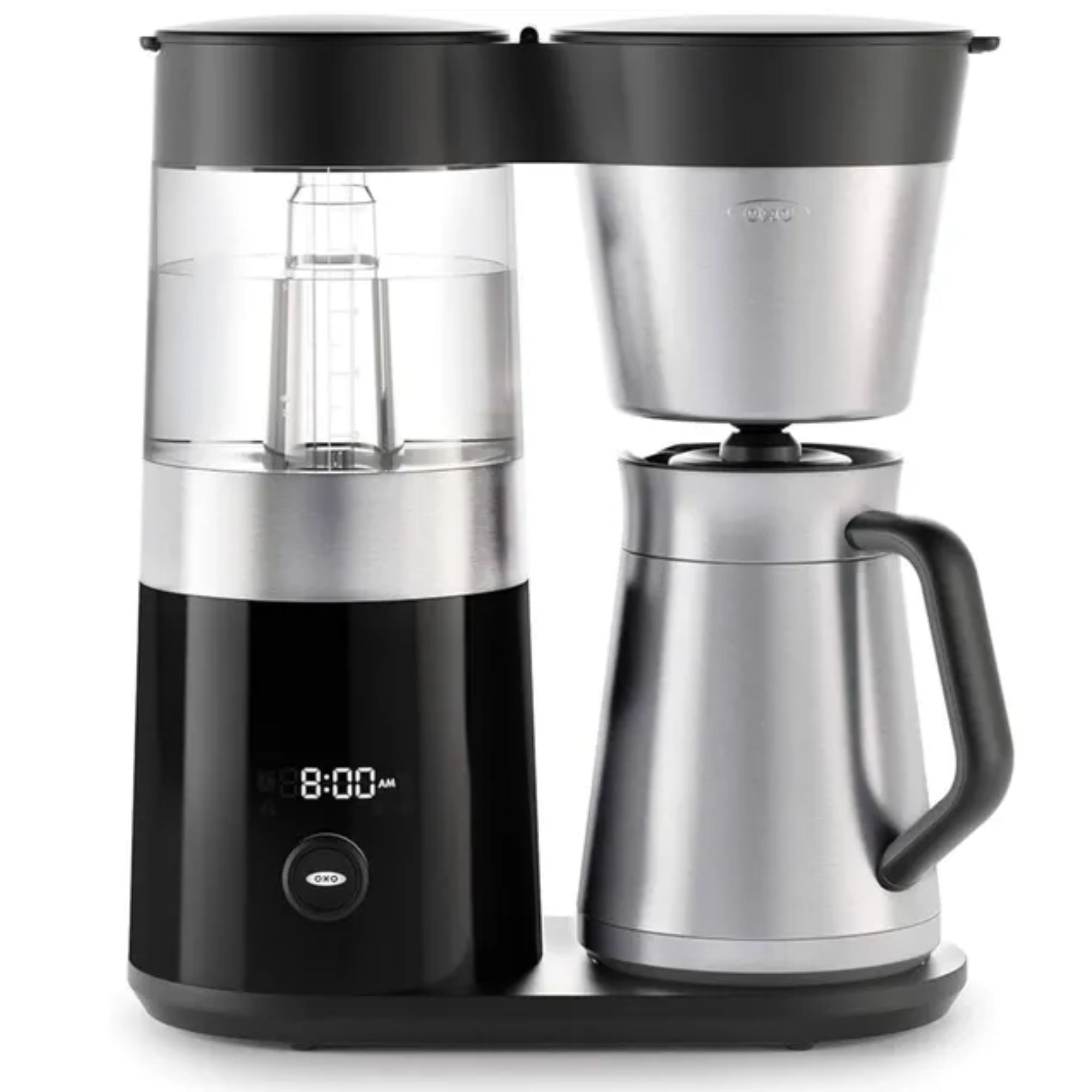
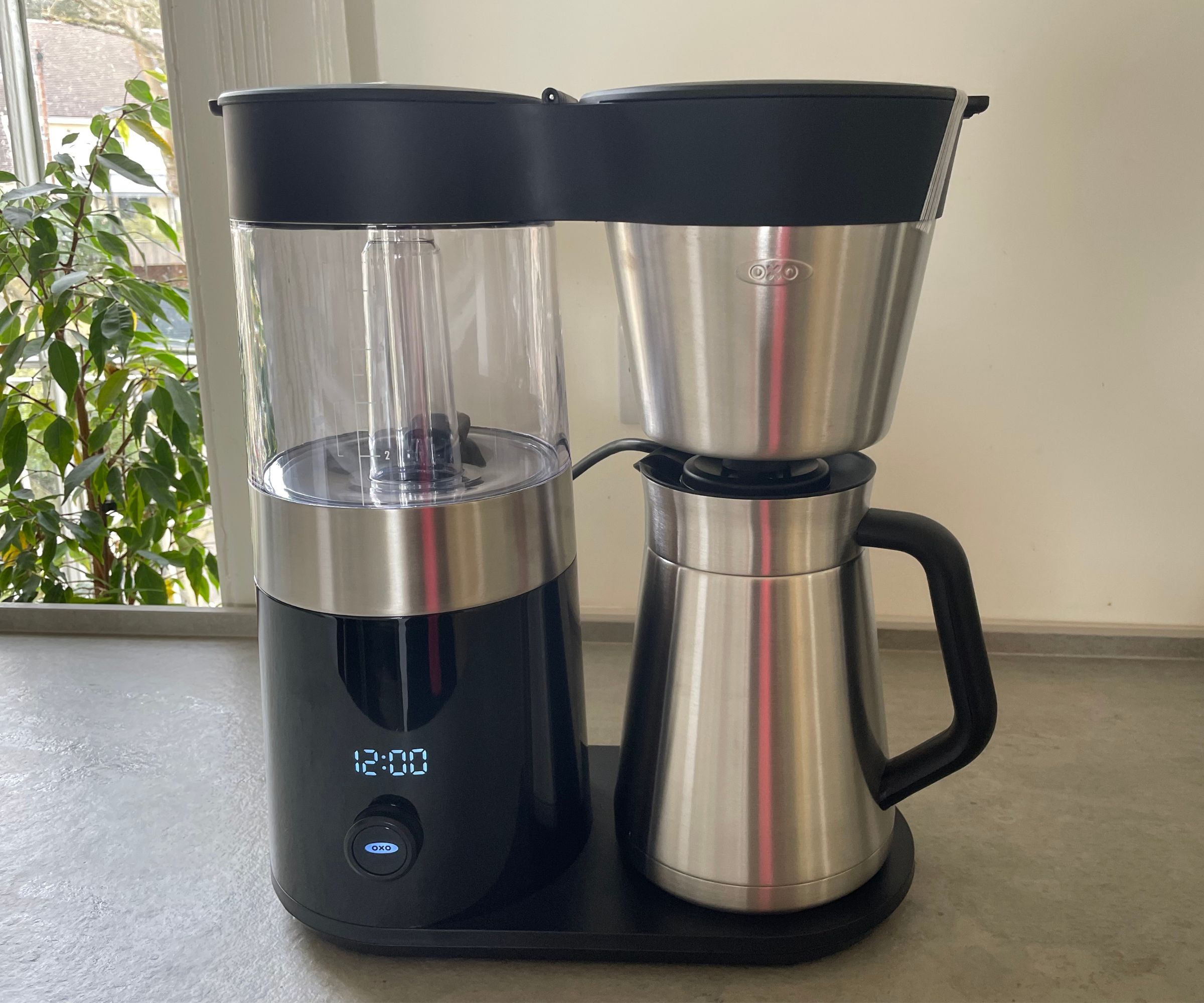
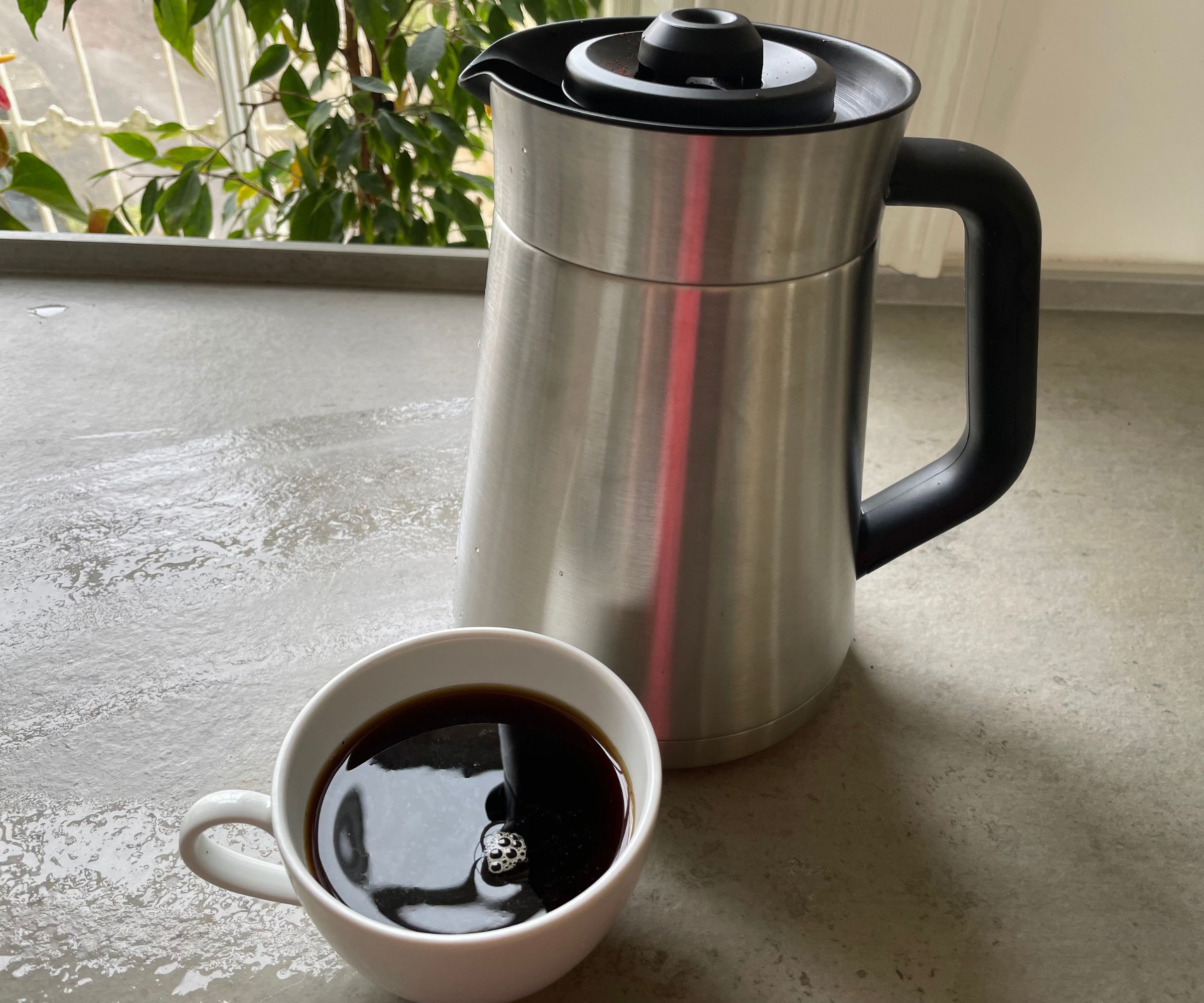
4. OXO 8 Cup Coffee Maker
Our expert review:
Specifications
Reasons to buy
Reasons to avoid
Made from stainless steel, this is a safe, affordable, specialty coffee maker. It’s very simple to use, but don't let that deceive you. This is one of a handful of home coffee makers that still meet the Speciality Coffee Association's Golden Cup Standard for brewing.
The OXO quickly earned its spot at the top of our buying guide for the best drip coffee makers for a number of reasons. First, the taste is unbeaten. It delivers consistently delicious and bold cups of coffee, regardless of the quantity being brewed.
We timed the OXO and it took less than six minutes to brew a full eight-cup carafe of coffee. Single cups of coffee were even quicker and still delicious. Plus, rather than use a hotplate (risking burnt or stale coffee) this has a double-walled carafe, which keeps coffee hot for hours and is easy to pour from. The only drawback to the OXO’s simplicity is that it isn’t programmable or customizable – but what it lacks in technology, it makes up for in non-toxic quality.
You can read more in our full OXO 8-cup coffee maker review
Best non-toxic toaster oven
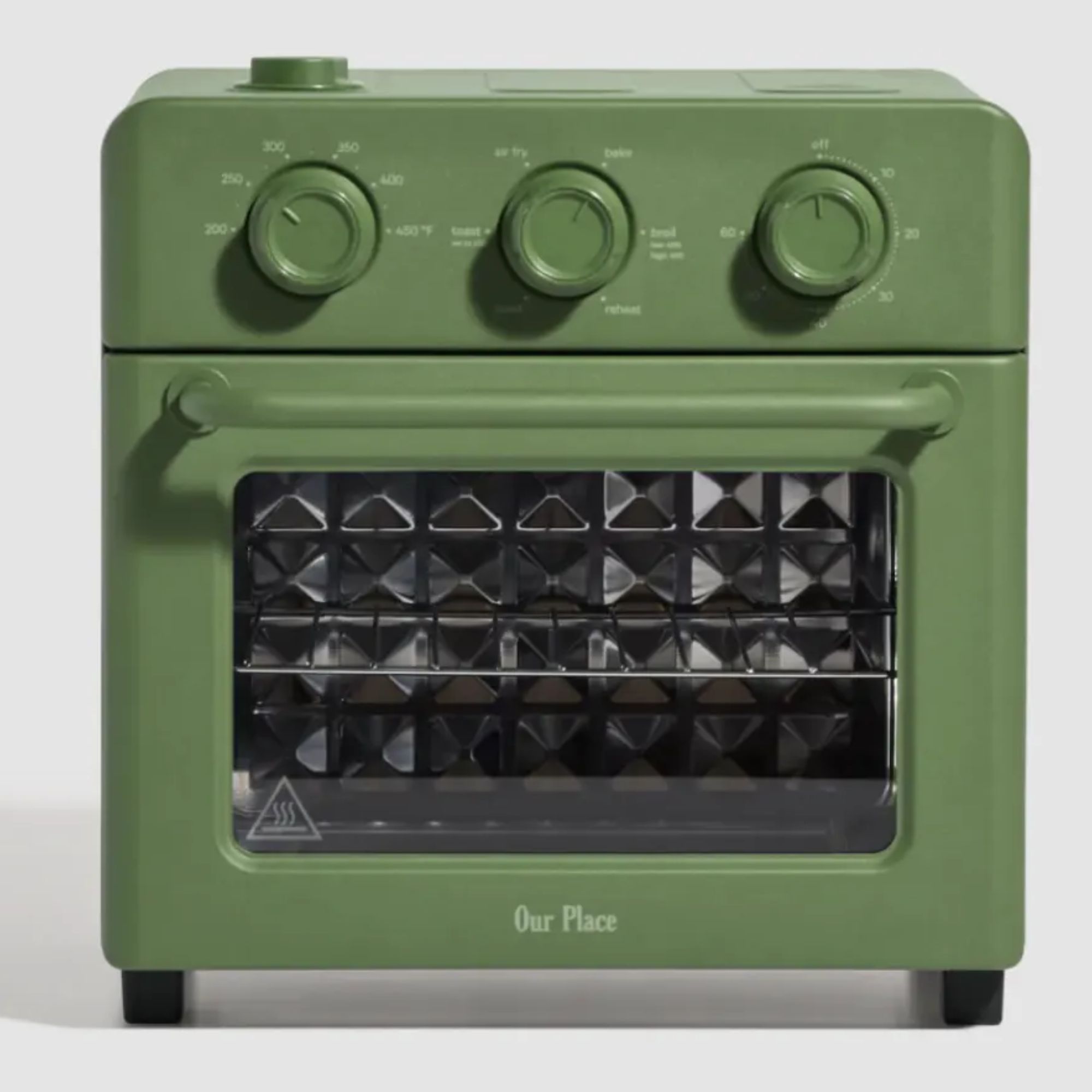

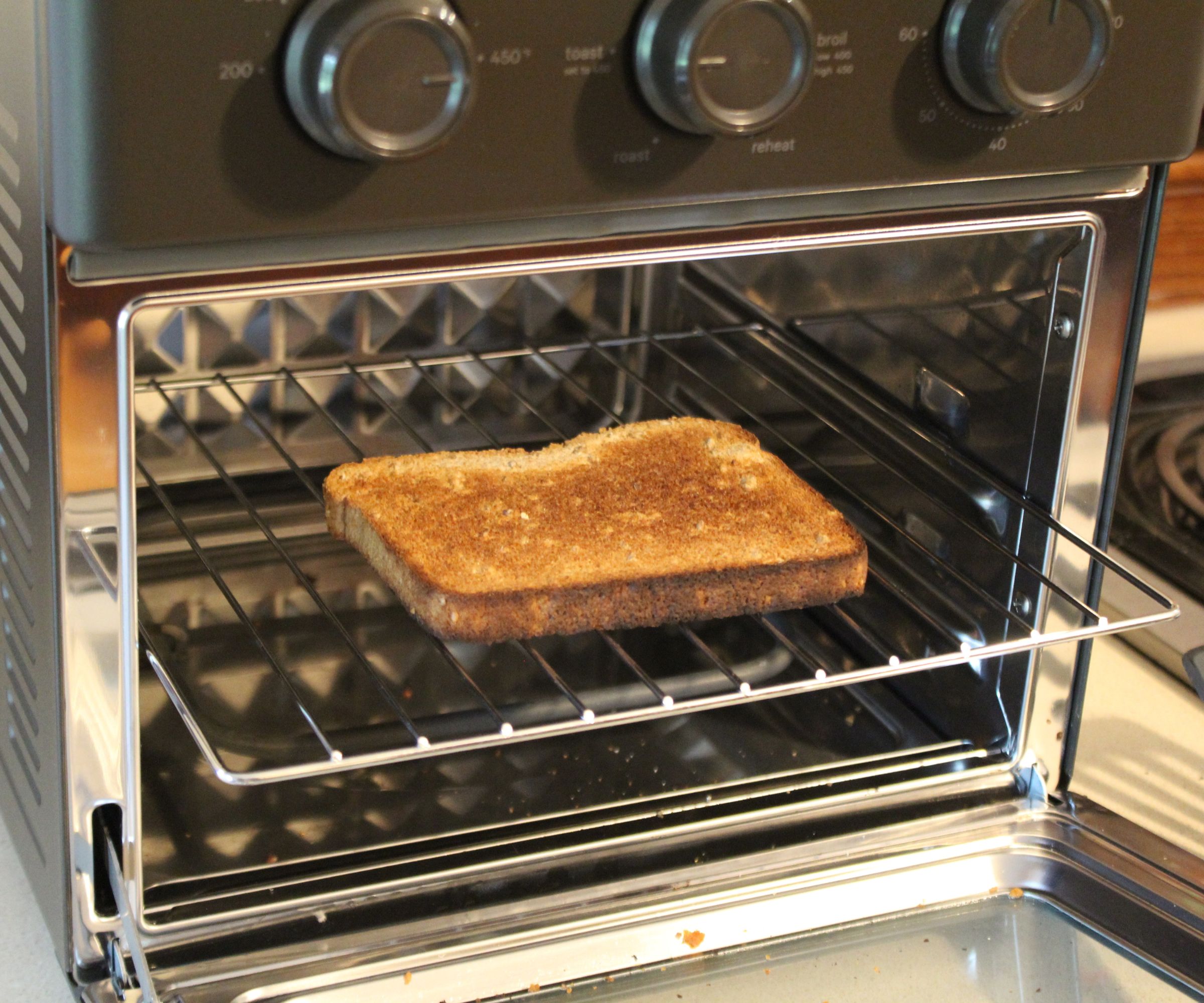
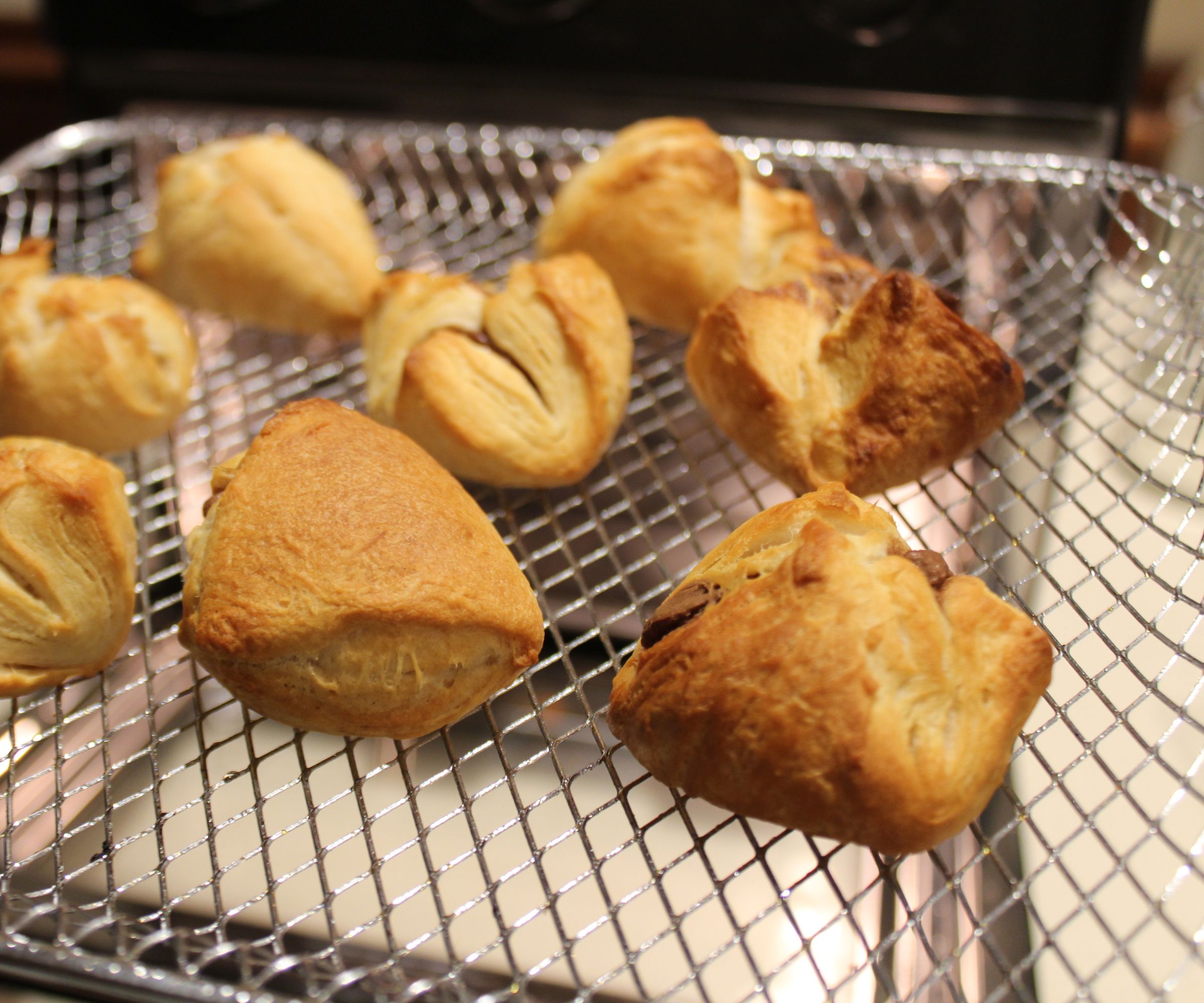
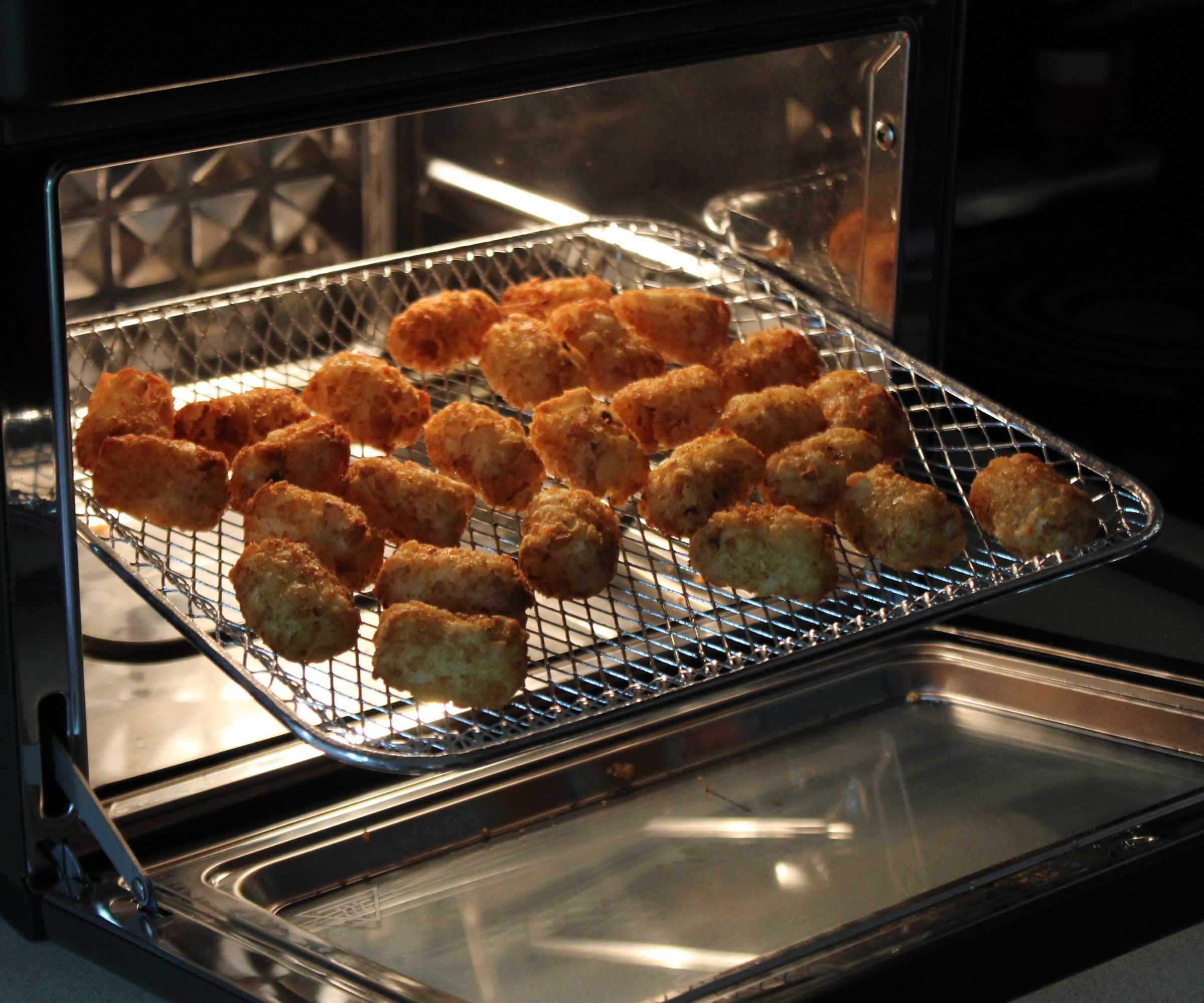
5. Our Place Wonder Oven
Our expert review:
Specifications
Reasons to buy
Reasons to avoid
If you're looking for a non-toxic appliance that's unique and stylish, the Our Place Wonder Oven will catch your eye. Recently, I’ve been testing it out in my kitchen, and it's been a refreshing change from the usual gray and black appliances.
The interior is made from stainless steel, while the baking tray is ceramic-coated and free of harmful 'forever chemicals,' so you can toast, bake, roast and steam with peace of mind.
The air fryer basket is made from chromed steel – in our tests, we crisped up fries, tater tots and stuffed peppers. I really liked the steam-baking function for creating light and fluffy food. There are other toaster ovens out there with a bit more precision and more exciting features, but the Wonder Oven delivers solid, dependable results without the worry of toxic materials.
A couple of quirks worth mentioning: it has an old-school analog timer, which makes it tricky to set exact cooking times – an issue when preparing delicate dishes like fish. Additionally, the oven’s racks don’t lock in place when pulled out, so you’ll need to be careful with heavier items. Despite these minor setbacks, the Wonder Oven is a great non-toxic option that brings a fresh, stylish touch to your countertop.
You can read more in our full review of the Our Place Wonder Oven.
The best non-toxic slow cooker
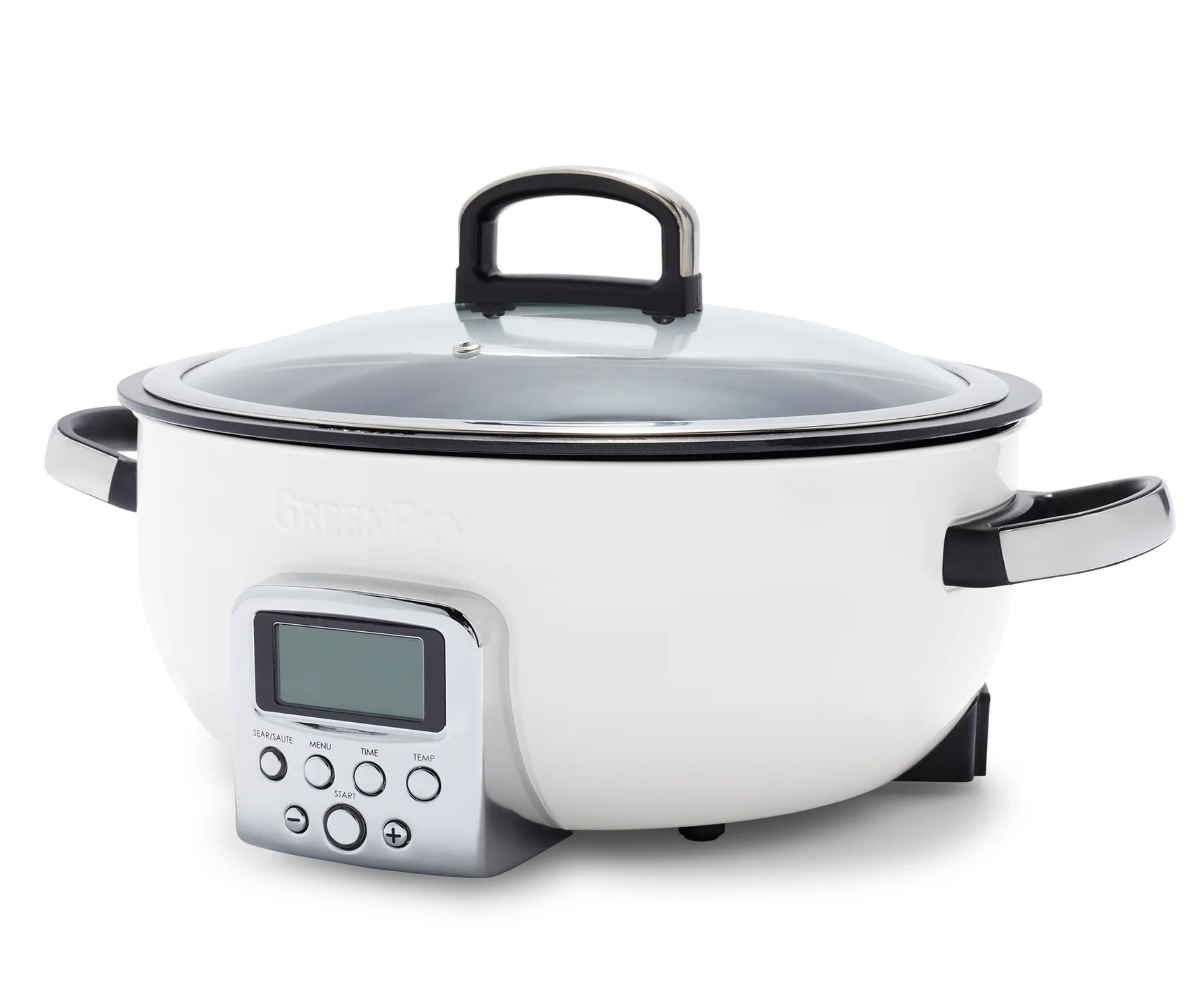
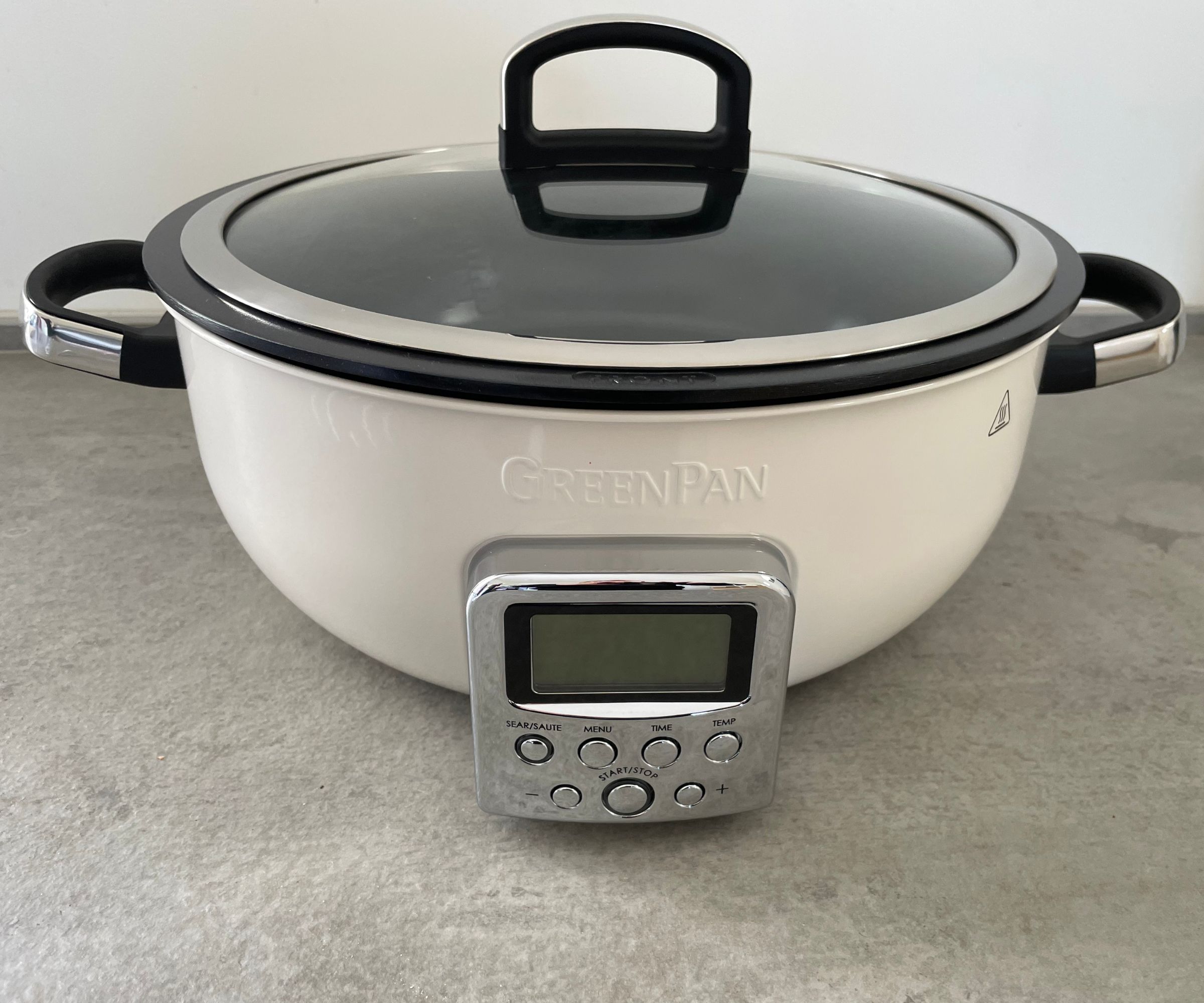
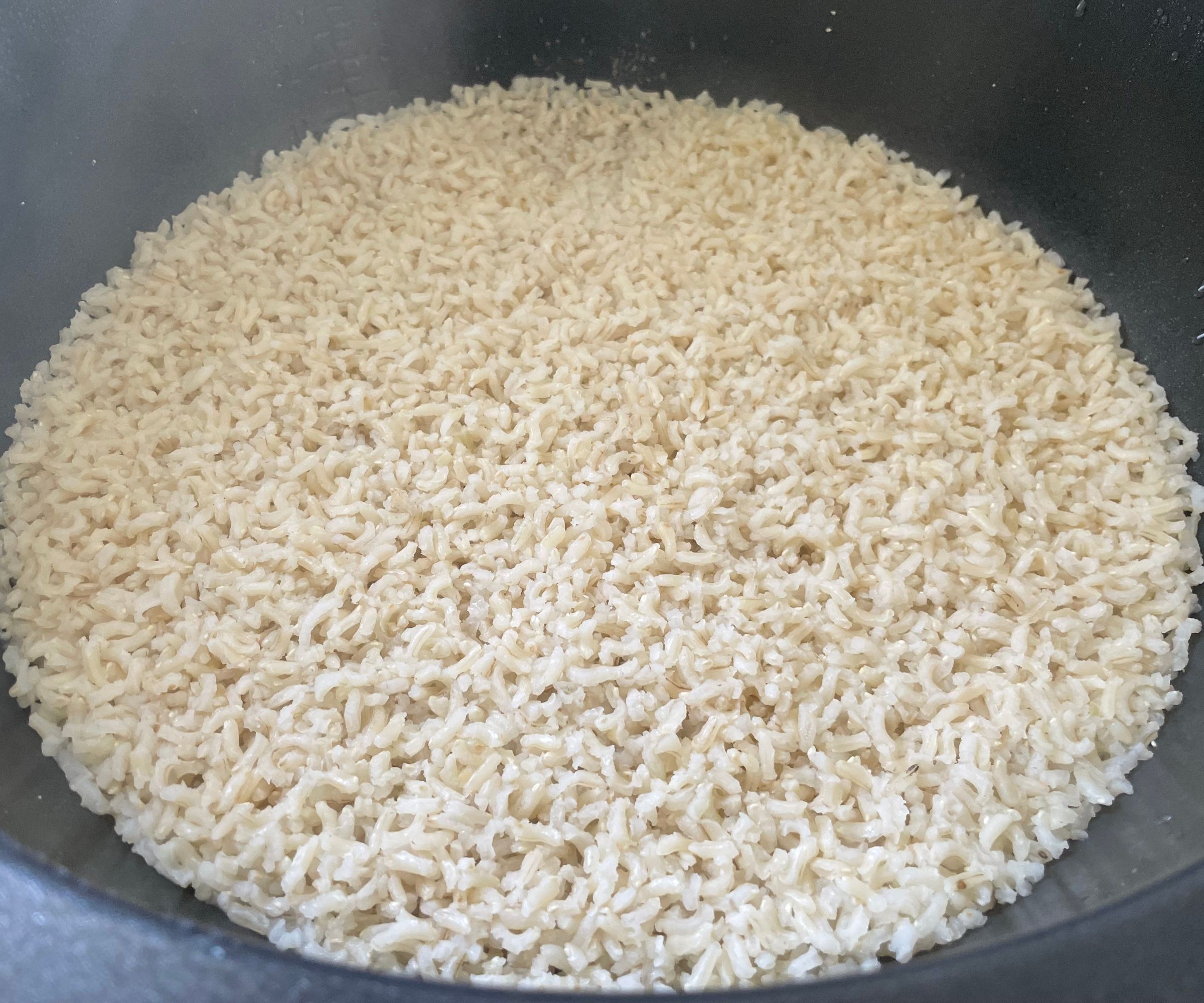
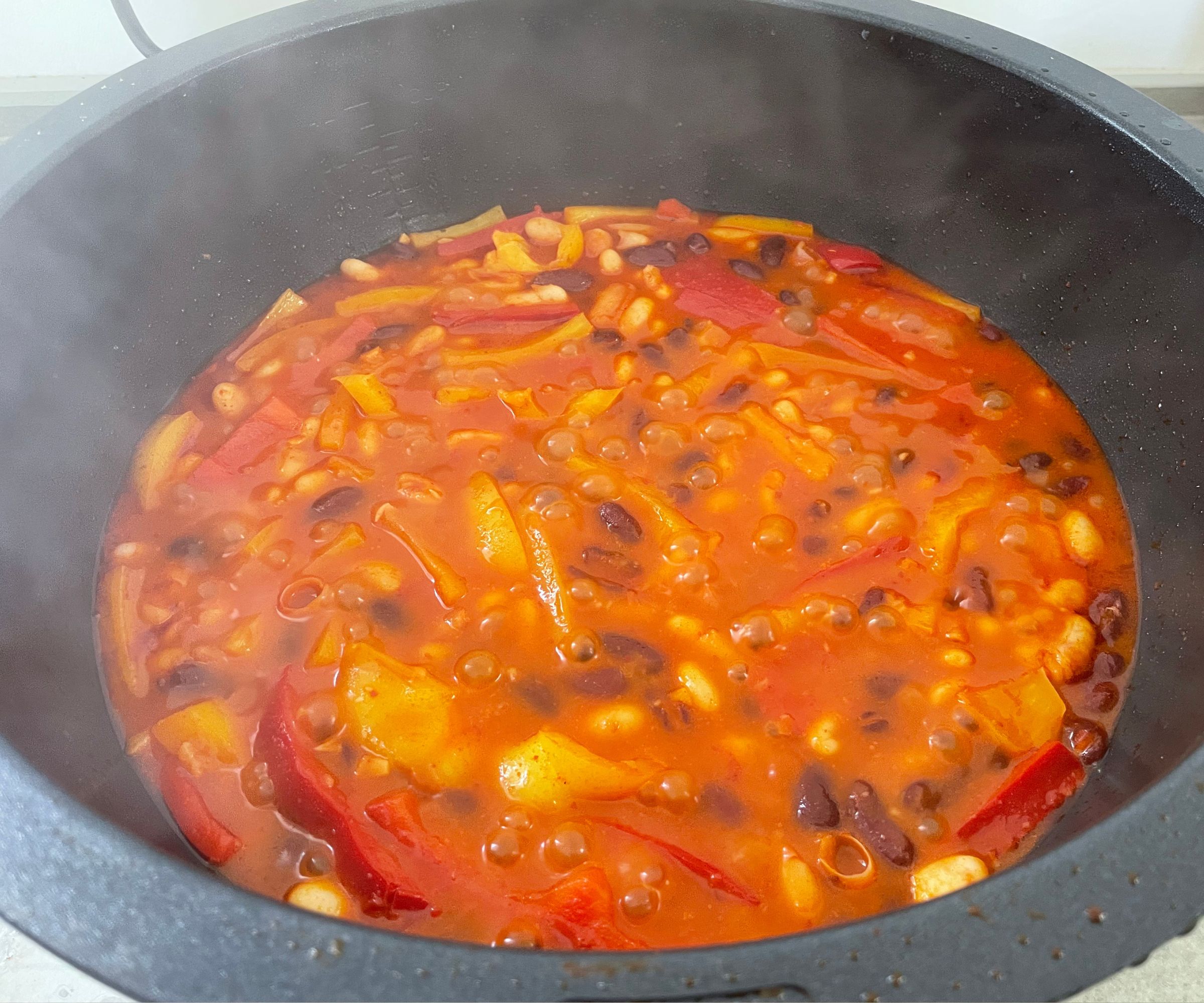
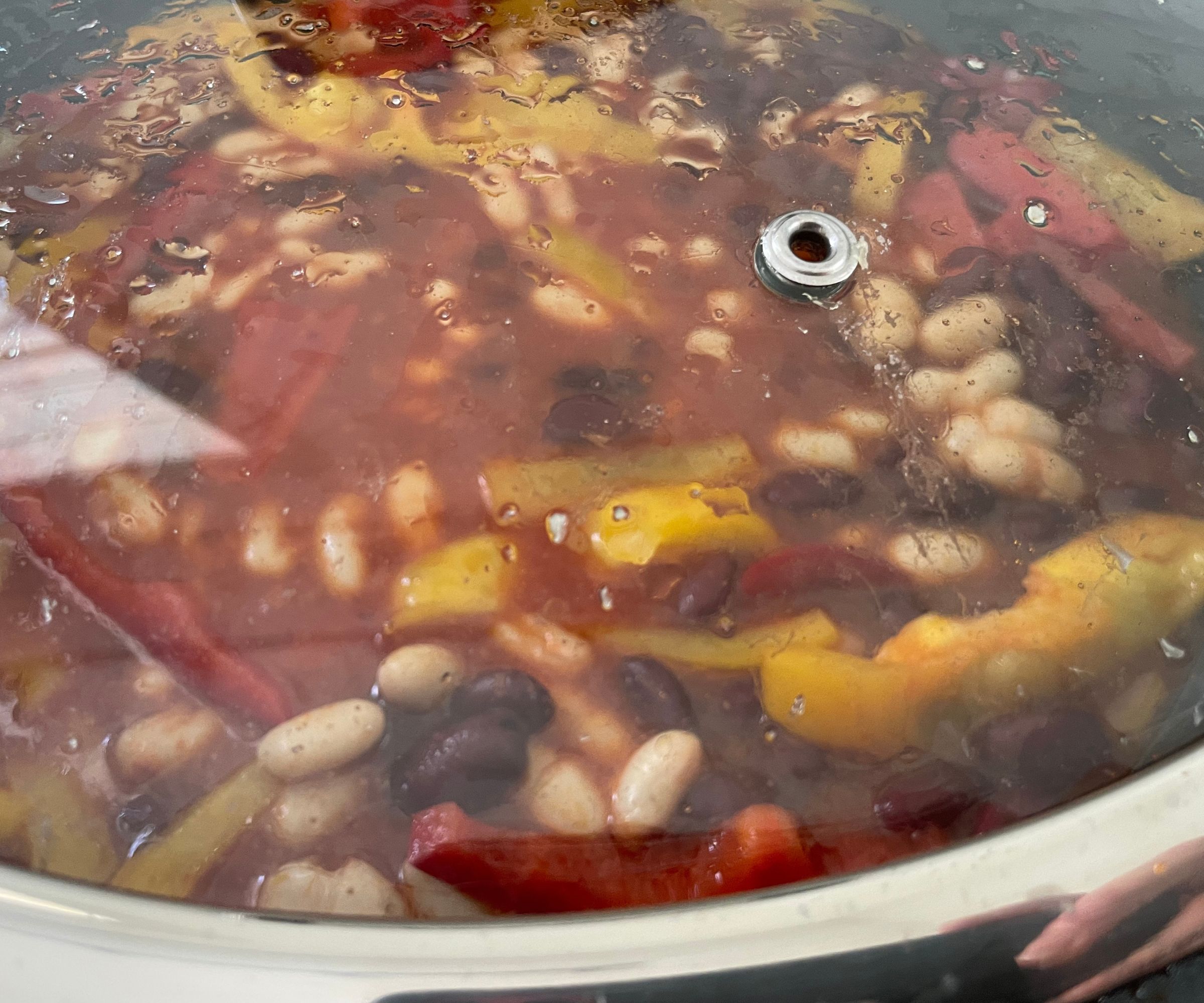
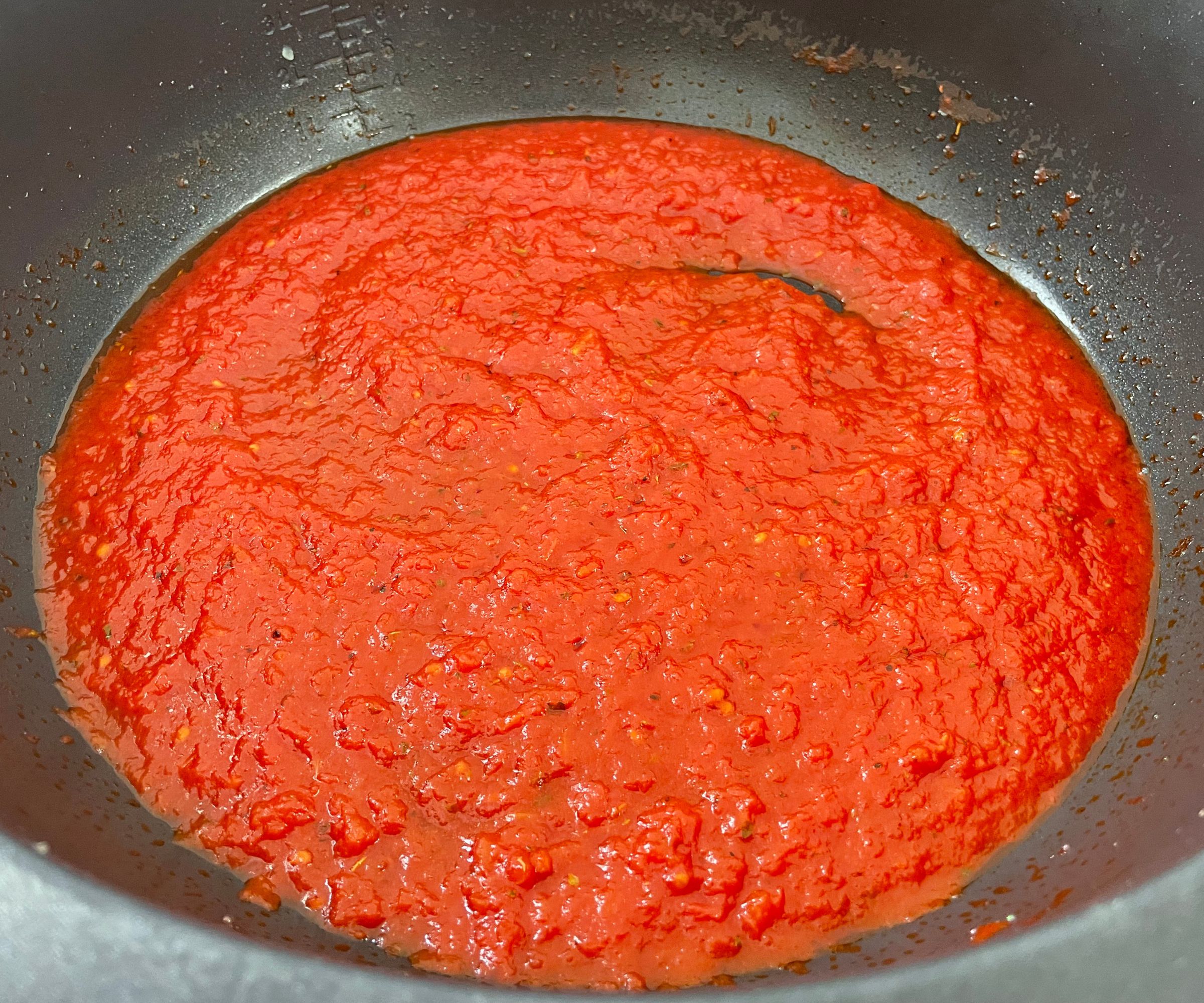
6. GreenPan Omni Cooker
Specifications
Reasons to buy
Reasons to avoid
This little pot is non-toxic for cleaner cooking and non-stick for quick and easy food release.
The Omni Cooker boasts a 6-qt. capacity. Which is just enough room to cater for a family of five and braise bigger joints of meat. Even though it's big, it's still the right size to make hearty, healthy meals for your family, and still have some leftovers for tomorrow's lunch.
The non-stick coating is free from PFAS, PFOA, lead, and cadmium to protect and preserve the natural flavors and aromas of your food. While the Omni lacks a few of the bells and whistles of some of the more premium machines in our best slow cooker guide, it can simmer, reheat, keep warm, and cook on low, high, and delay. That might not be everything you want in a slow cooker, but it's probably everything you need.
The Omni is easy to use and quick to clean. Both the inner pot and the tempered glass lid are dishwasher-safe, though you might prefer to hand-wash to scrub at spills and stains. As for the outside, all you need to do is wipe it down with a damp sponge cloth, and it should look as good as new.
There's more detail in the GreenPan Omni Cooker review.
Best non-toxic chopping board

7. John Boos Block Reversible Cutting Board
Our expert review:
Specifications
Reasons to buy
Reasons to avoid
I'm not keen on plastic chopping boards. I’ve used them in the past, only to see the plastic surface chipping and flaking into my food over time. I’ve tried some fantastic Japanese rubber and bamboo cutting boards, but my overall winner is the John Boos block.
A favorite among professional chefs, these wooden boards score thousands of 5-star Amazon reviews from home cooks. Even my culinary icon, Ina Garten, uses these boards in her kitchen.
The one I use at home is crafted from maple, a naturally soft wood that preserves the sharpness of your knives and doesn’t chip away over time. There’s also a ‘juice groove’ carved around the edges to prevent juices from spilling over onto the counter. They are not only practical and durable, but also aesthetically pleasing – I think they bring a touch of natural beauty to the kitchen.
However, like all wooden cookware, these boards require proper care to maintain their longevity. You can’t put them in the dishwasher, and you need to oil the surface about once a month to keep the wood from drying out or cracking. With the right maintenance, this non-toxic cutting board will reward you with healthy, happy chopping for years to come.
Best non-toxic blender
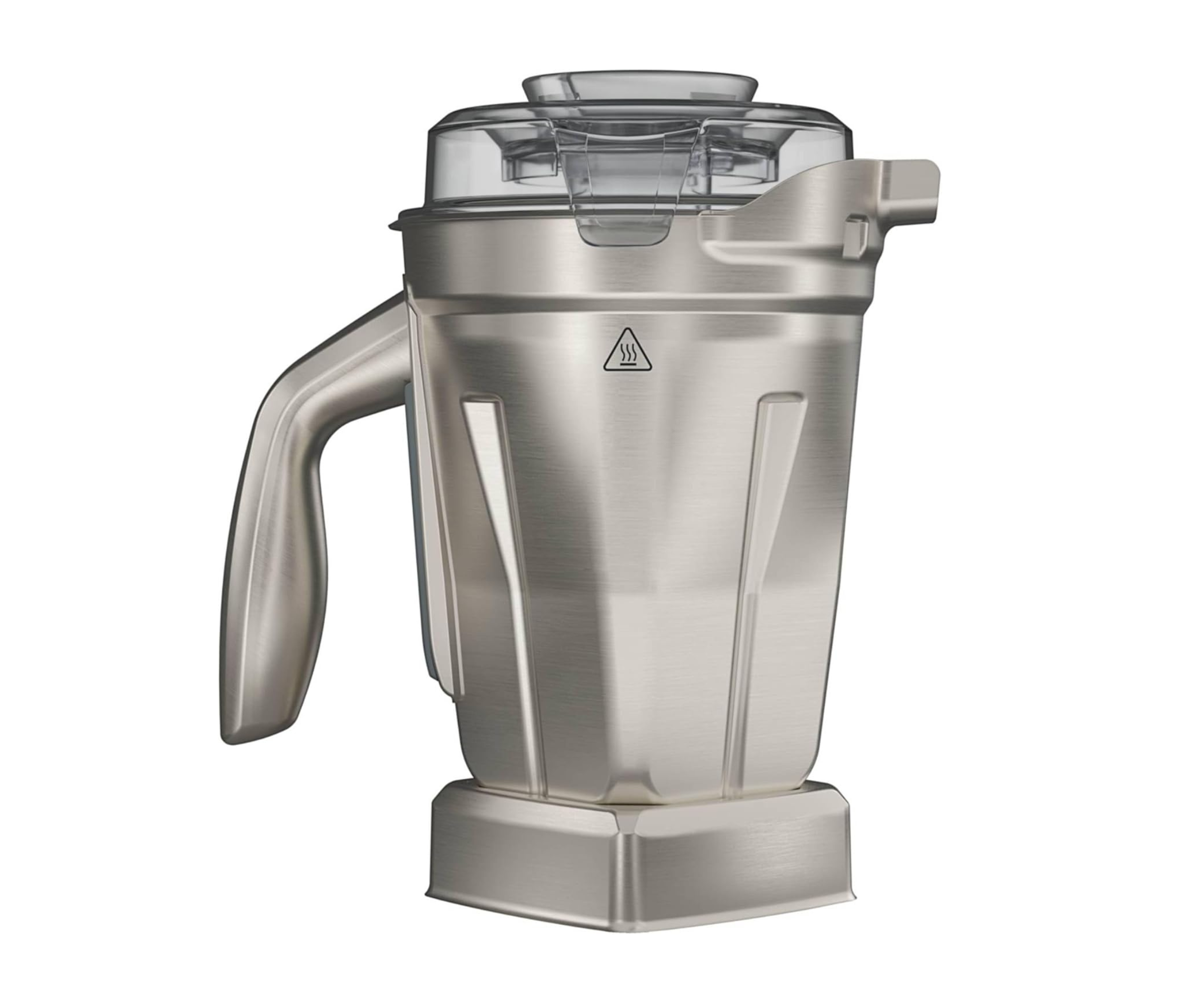
8. Vitamix Stainless Steel Container
Our expert review:
Specifications
Reasons to buy
Reasons to avoid
It’s no secret that Vitamix makes the very best blenders on the market, and they’re now available with an even more eco-friendly accessory: the Stainless Steel Container. While the brand has long offered BPA-free Tritan containers, this stainless steel alternative is a game-changer for those who want to combine the power of Vitamix with the benefits of high-quality, stainless steel cookware.
There’s a reason stainless steel is a staple in professional kitchens – it's incredibly durable, versatile, and easy to clean. This container embodies those same qualities, providing a sturdy, long-lasting solution with no risk of plastic chipping or chemical leaching. I find it perfect for storing plant milks, smoothies, or even homemade sauces in the fridge. It’s a great option for those, like me, who are looking to reduce plastic use in food preparation and storage.
The container also features a clear, BPA-free lid – it doesn't come into contact with your ingredients, but hopefully allows you to monitor your blends without disrupting the process. With this stainless steel container, I feel confident that I’m making healthier choices for my kitchen, with less plastic and more peace of mind.
Best non-toxic bakeware
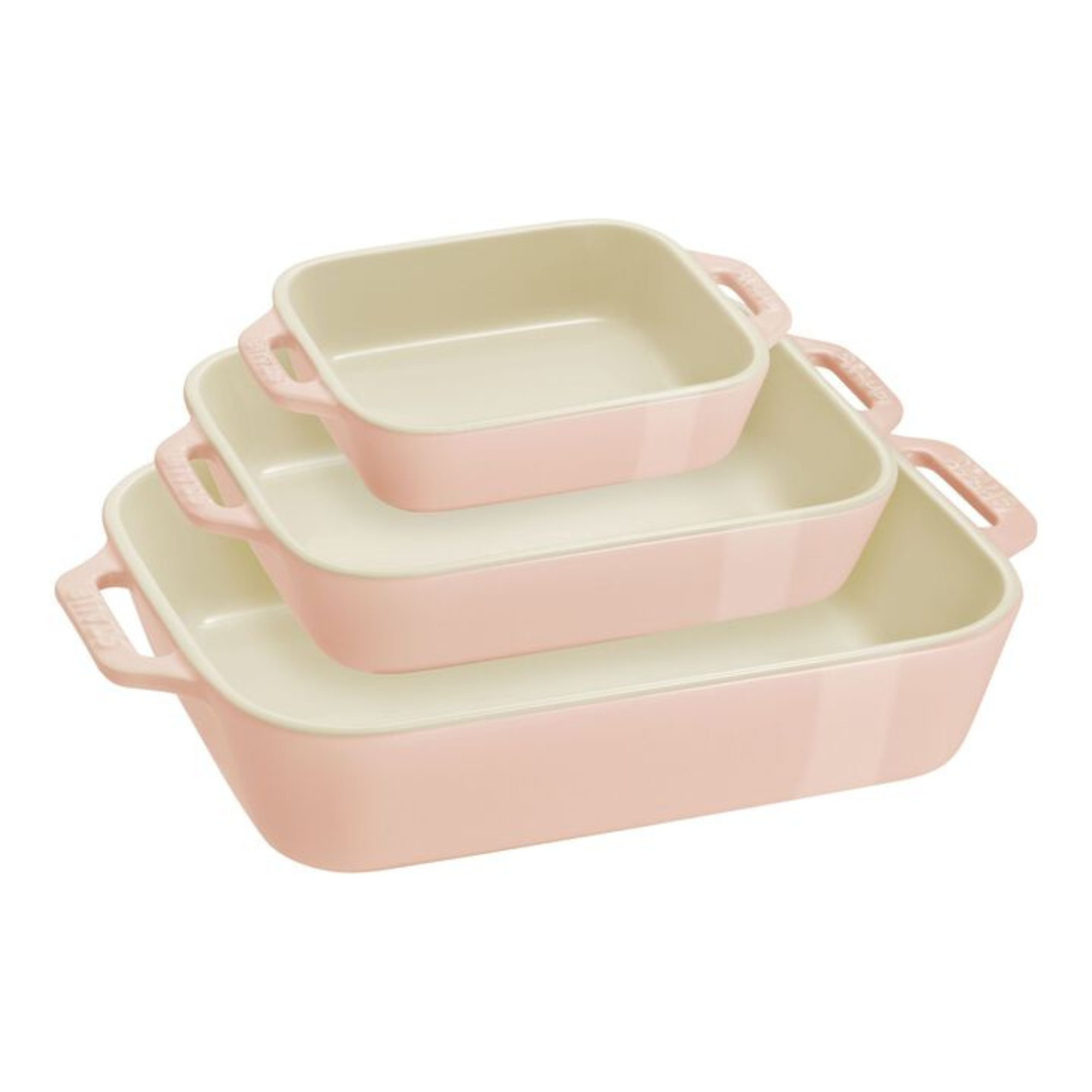
Staub 3-piece Set Stoneware Baking Dishes
Our expert review:
Specifications
Reasons to buy
I've been testing these Staub stoneware rectangular baking dishes throughout fall and winter this year, and they're a joy to bake with.
Made from durable stoneware, they are designed to evenly diffuse heat, ensuring that food cooks gently and retains warmth for longer periods, making them ideal for serving dishes straight from the oven to the table.
Unlike some other materials, stoneware will not absorb moisture, which prevents warping or cracking, even with repeated use. The pastel-color finish – a high-quality, porcelain enamel – resists scratching and staining.
Most importantly, the enamel coating is non-reactive, meaning it won’t release harmful chemicals into your food, making these dishes a non-toxic and reliable choice for everyday use. You could even use the mini dish in the air fryer – an excellent investment for any health-conscious kitchen. These dishes will last for years to come.
FAQs
What are toxins in cookware?
When kitchenware brands talk about ‘toxins’, they’re usually referring to PFAS.
First used in the 1940s, PFAS are chemicals that resist grease, oil, water, and heat. These chemicals are super stubborn, so they’re often found in products designed to be stain-resistant, clean, and dry (like cookware, cleaning products, and carpets).
The FDA says, 'Exposure to certain PFAS types has been linked to significant health issues, such as increased cholesterol, high blood pressure, developmental effects, reduced immune response, altered liver function, and increased cancer risk.'
You can find more information in my guide to non-toxic cookware.
Are non-stick appliances toxic?
To explain this one, I'll go back to the beginning. Historically, perfluorooctanoic acid (PFOA) was used to create non-stick coating. PFOA has since been linked to various health issues, including cancer, liver damage, and developmental problems. It has now been phased out of production in many countries (including the United States).
These days, the majority of non-stick cookware is labeled ‘PFOA-free’ and the non-stick coating itself (widely known by the brand name Teflon) is generally considered safe when used properly.
However, Pam Hartnett (Nutritionist and Public Health expert) warns that, ‘Damaged or overheated non-stick coating can cause toxins to be released into the air and food’. Dennis Littley (a fine-dining chef with over 40 years experience in the kitchen) provides more detail: 'Teflon-coated pans can start to break down and release fumes at temperatures above 500°F (260°C).'
To cook safely, it's essential to avoid damaging your nonstick appliances or opt for toxin-free non-stick equipment instead – like the ceramic, enamel, steel and titanium alternatives listed in this guide.
Sign up to the Homes & Gardens newsletter
Design expertise in your inbox – from inspiring decorating ideas and beautiful celebrity homes to practical gardening advice and shopping round-ups.

Lydia is the Kitchen Appliances Editor for Homes & Gardens, testing everything from air fryers and mixers to juicers and coffee machines. She trained in Culinary Arts at Leiths School of Food & Wine and previously served as the Recipe Editor for Mindful Chef.
-
 Plants never to grow next to fruit trees
Plants never to grow next to fruit treesExpert advice on which plants to keep away from fruit trees to encourage a healthy harvest
By Jacky Parker Published
-
 Martha Stewart's tips for arranging daffodils are unbelievably simple and effective – it's the only flower advice you need this springtime
Martha Stewart's tips for arranging daffodils are unbelievably simple and effective – it's the only flower advice you need this springtimeMartha shows us that we can create gorgeous bouquets of this seasonal flower by simply trimming the stems and placing them in specific vases
By Hannah Ziegler Published